Vol. 70, No. 10 (2021)
2021-05-20
SPECIAL TOPIC—Flexible electronics
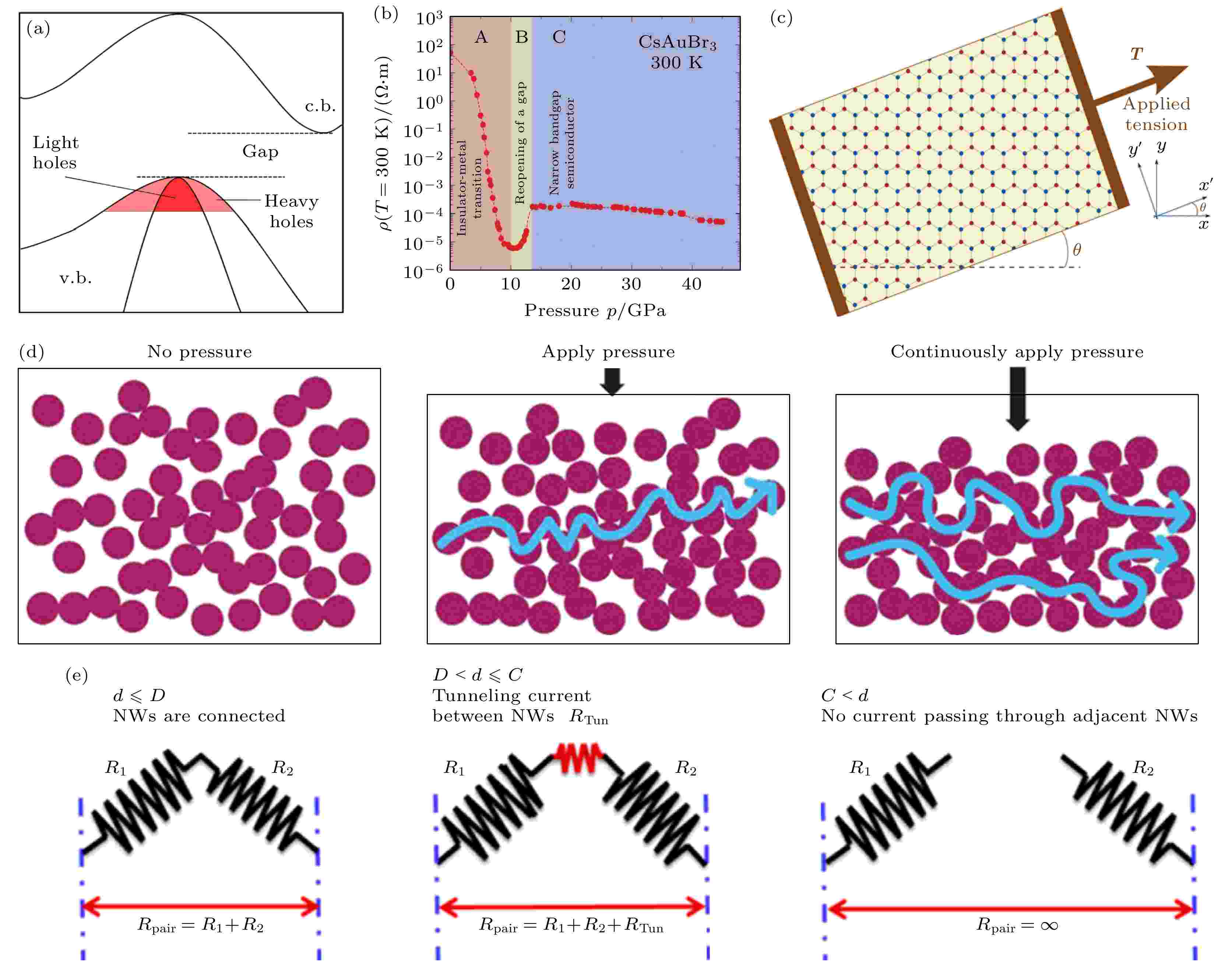
EDITOR'S SUGGESTION
2021, 70 (10): 100703.
doi: 10.7498/aps.70.20210023
Abstract +
In recent years, the flexible piezoresistive pressure sensor has attracted widespread attention due to the trend of improved wearable electronics applied to the field of electronic skin, disease diagnosis, motion detection and health monitoring. Here in this paper, the latest progress of the exploitation of flexible piezoresistive pressure sensors is reviewed in terms of sensing mechanism, selection of sensing materials, structural design and their advanced application. Firstly, the sensing mechanism of piezoresistive pressure sensors is generally introduced from the band structure of semiconductor materials, seepage theory and tunneling effect of conductive polymer composites and changes in interface contact resistance. Based on these sensing mechanisms, various flexible piezoresistive pressure sensors with high sensitivity, broad sensing range and fast response time have been developed. The selection of composition materials and microstructural design in flexible piezoresistive pressure sensor to implement the optimization of sensing performance are emphatically presented in this review. The composition materials including organic polymer material and inorganic nanomaterial based on two-dimensional (2D) materials such as graphene and MXene are intensively exhibited. In addition to the above characteristics, these kinds of pressure sensors exhibit high mechanical reversibility and low detection limit, which is essential for detecting the minor motions like respiratory rate and pulse. Moreover, the well-designed structures applied to the composition analysis are also overviewed, such as the sea urchin-like structure, spongy porous structure and regular structure. Various designed structures provide further properties like stability for the flexible pressure sensor. However, comparing with traditional pressure sensor, the mass production and application of flexible pressure sensor are confronting several barriers, like the high cost of raw materials and relatively complex manufacturing processes. How to achieve the low cost and low energy consumption simultaneously on the basis of excellent performance is still a challenge to expanding the applications of flexible pressure sensor. Novel sensing mechanism, functional materials and synthetic integration are expected to be developed in the future. And also, the potential application of flexible pressure sensor will be further expanded after endowing it with more functions.
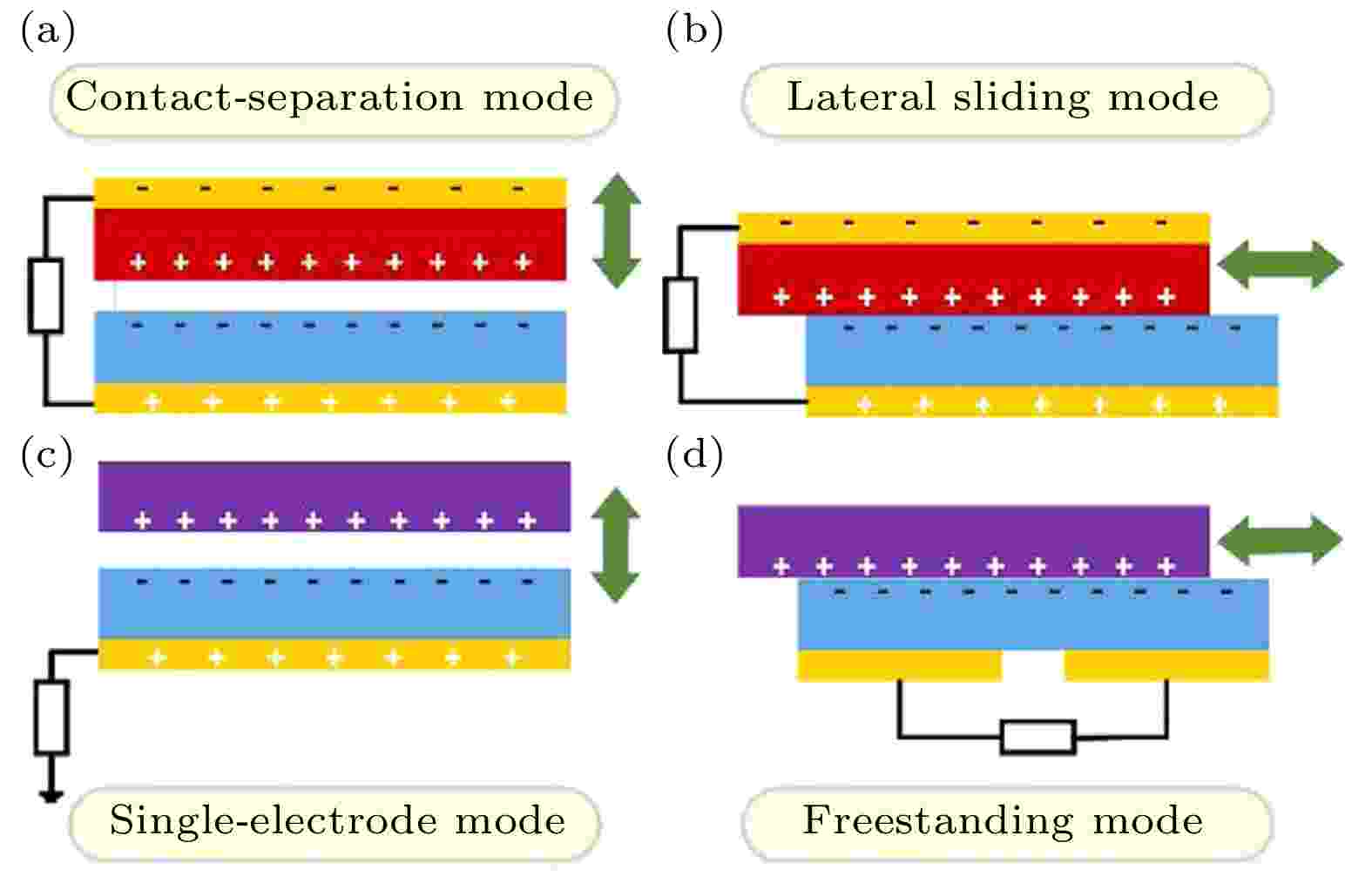
EDITOR'S SUGGESTION
2021, 70 (10): 100705.
doi: 10.7498/aps.70.20202157
Abstract +
GENERAL
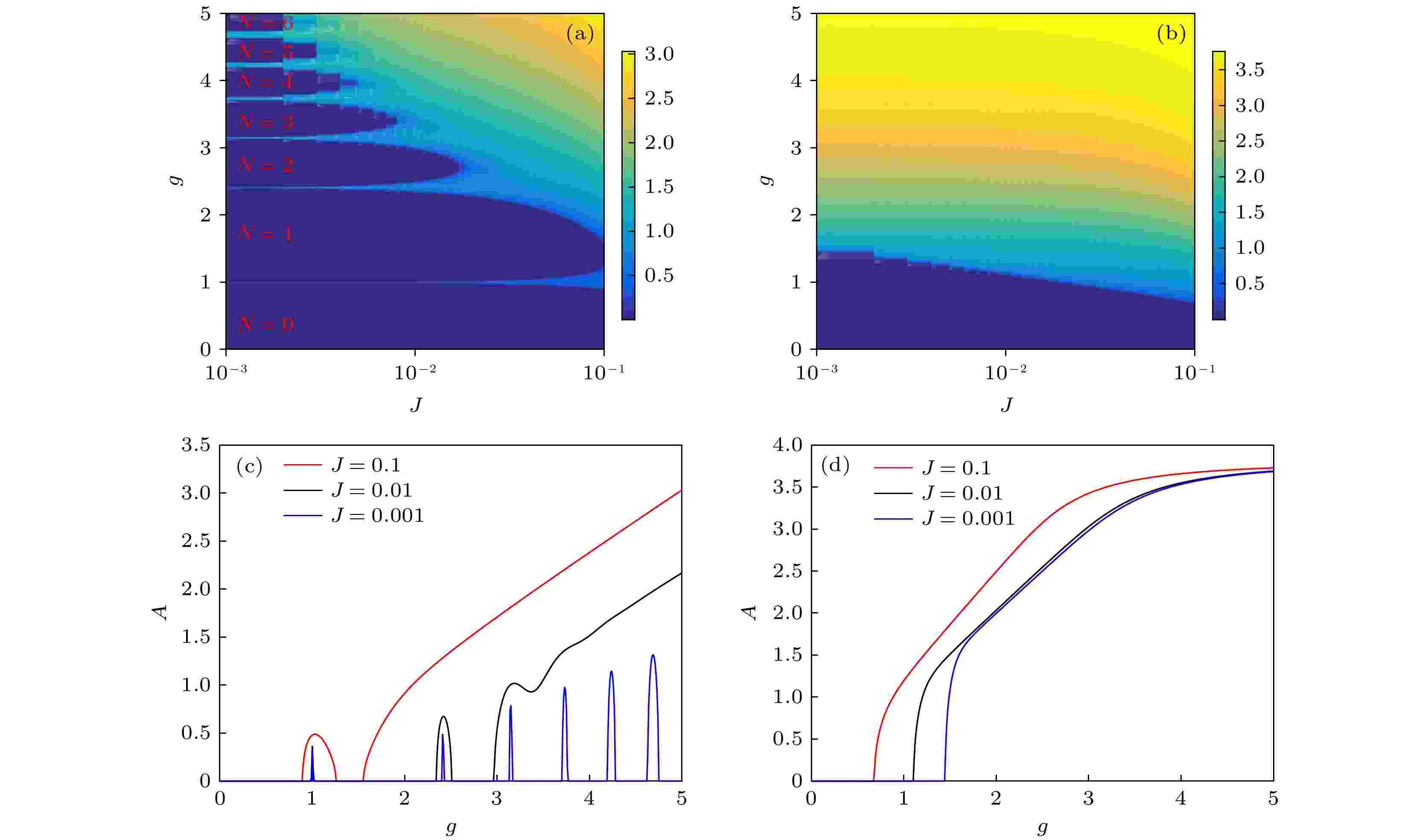
COVER ARTICLE
2021, 70 (10): 100201.
doi: 10.7498/aps.70.20202066
Abstract +
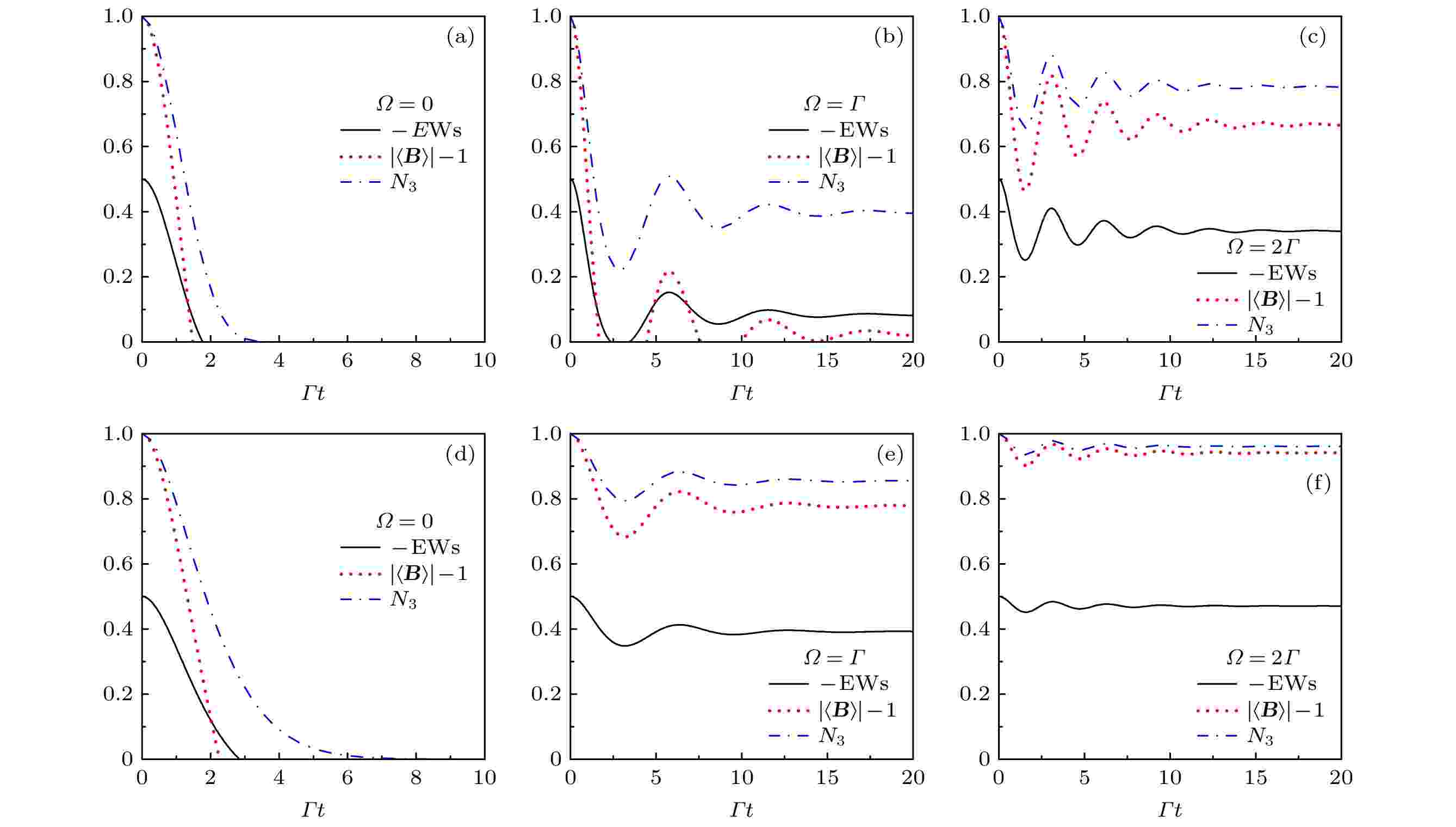
EDITOR'S SUGGESTION
2021, 70 (10): 100301.
doi: 10.7498/aps.70.20202133
Abstract +
Much attention has been paid to the dynamics of quantum correlation in an open quantum system coupled to a single-layered environment for a long time. However, the system can be influenced by the multilayer environment or hierarchical environment in realistic scenarios, which is attracting increasing interest at present. In this context, we explore in this paper the dynamics of quantum correlation for a quantum system consisting of three independent qubits, each being immersed in a single mode lossy cavity which is further connected to another cavity. The influences of cavity-cavity coupling strength Ω and the decay rate of cavity Γ1 on the measures of quantum correlation, including negativity, Bell non-locality as well as entanglement witness, are investigated in detail in a strong coupling regime and a weak coupling regime. It is shown that the phenomena of sudden death and sudden birth can happen to both Bell non-locality and entanglement witness. When the decay rate Γ1 = 0 is given, with the increase of Ω these measures eventually reach their stationary values over time after a short period of damping oscillations, in which these stationary values will become larger for the larger Ω. At the same time, the values or the survival times of quantum correlation considered by us in the weak coupling regime are better than in the strong coupling case. In addition, the non-zero Γ1 has a great negative effect on quantum correlation. Hence, in order to suppress the loss of quantum correlation better, the effective manipulation of quantum weak measurement and measurement reversal operator is considered further. Some interesting results are obtained.

2021, 70 (10): 100701.
doi: 10.7498/aps.70.20202012
Abstract +
Photoacoustic (PA) and thermoacoustic (TA) imaging can share a set of data acquisition and data processing system, in addition to different excitation sources. In this paper, a reflection mode PA/TA dual modality imaging based on a hollow concave array is proposed. The PA/TA signals are excited through the holes in the hollow array by using optical fiber and dipole antenna, respectively. The excited light, microwave and received ultrasonic signals are coaxial, forming a PA/TA dual modality imaging mode. Through the compensation and calibration of the transducer crystal phase and amplitude of the hollow part of the array, a 3-mm-diameter plastic tube filled with 0.9 wt.% salt water, safflower oil, human arm, back of hand and instep are successfully imaged, separately. These experimental results show that the spatial resolution of the PA/TA dual modality imaging system is 0.33 mm, and this technology has a potential to provide the optical and microwave absorption distribution of tissues at the same time by using the same hollow concave array, which is helpful in accurately detecting tumor, diabetic foot and other diseases, and has a wide range of clinical application prospects.
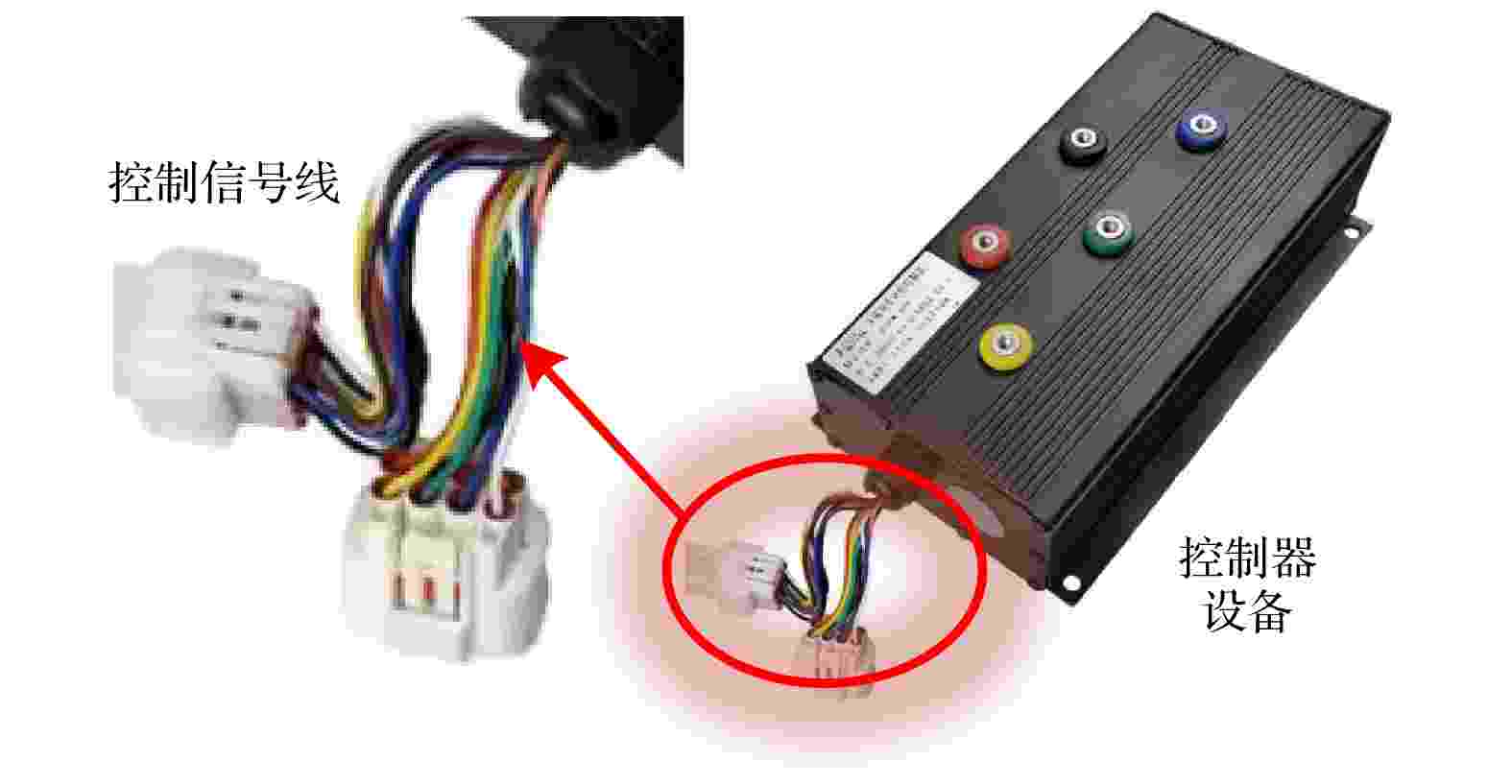
2021, 70 (10): 100702.
doi: 10.7498/aps.70.20201723
Abstract +
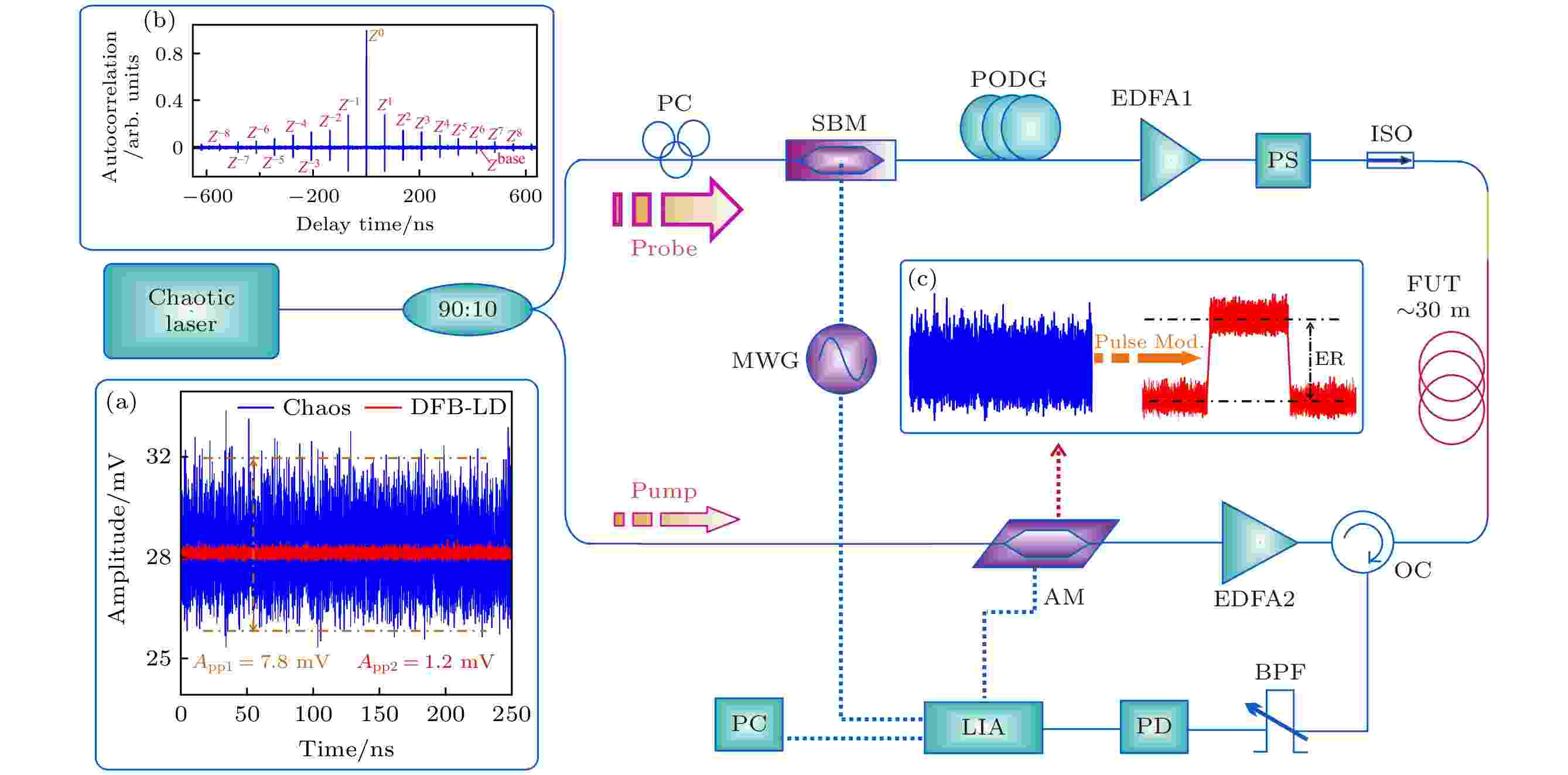
2021, 70 (10): 100704.
doi: 10.7498/aps.70.20201892
Abstract +
Nowadays, distributed dynamic sensing technology based on stimulated Brillouin scattering has been widely employed in civil structure health monitoring, disaster warning, national defense, etc. In this paper, we propose and experimentally demonstrate a novel Brillouin optical correlation-domain analysis based-on gain-switch modulation and dual-slope assisted method for achieving high-accuracy large-range dynamic strain measurement. In single-slope assisted chaotic Brillouin sensing, the measurement accuracy of dynamic strain is deteriorated by the inherent characteristics of time delay signature and power stochastic fluctuations. First, the mechanism behind the acoustic field deterioration and principle of background noise suppression are analyzed theoretically. Then, the chaotic continuous pump light is modulated into pulsed light with a higher extinct ratio of 48.6 dB, where the electro-optical modulator is replaced by a gain switch. And thus, the noise peaks, induced by the secondary peaks and irregular basal oscillations of chaotic auto-correlation curve, are greatly restrained. Comparing with the electro-optical modulator-based system, the signal-to-noise ratio of stimulated Brillouin acoustic field is increased by 3.31 dB in simulation and the signal-to-background ratio of Brillouin gain spectrum is doubled in experiment. Consequently, the measurement accuracy of dynamic strain is improved from ± 40.2 με to ± 23.1 με and the relative error decreases from ± 5.0% to ± 2.9% in single-slope assisted system based-on gain switch modulation. In addition, a dual-slope assisted method is inspired to eliminate the detrimental effect caused by the intrinsic power fluctuations of chaotic laser. A verification experiment is pre-conducted that the dynamic strain could be correctly interrogated although a wide range pump power variation has been manually applied. The measurement accuracy is ultimately enhanced to ± 8.1 με and the relative error is ± 1% correspondingly, implying a higher stability. The dynamic range of this proposed system is retained at 800 με, which is approximately 5 times as large as the dynamic range of the traditional dual-slope assisted configurations. The 4-cm spatial resolution along 30-m FUT is also investigated and consistent with the result obtained previously. A larger measurement range and a higher vibration frequency would be further explored by using the multi-slope assisted method and piezoelectric ceramic oscillator respectively. The superior slope-assisted chaotic Brillouin optical correlation-domain analysis will provide a new solution for the accurate positioning and real-time monitoring of dynamic parameters in modern industry.

2021, 70 (10): 100706.
doi: 10.7498/aps.70.20210018
Abstract +
In the traditional cellular automata evacuation model, the space is divided into fine grids at a micro level, which is mainly used in a two-dimensional plane case. The evacuation space is mostly a small-scale architectural space or local area. Therefore, it is difficult to simulate a wide range of evacuation scenario, and there are less researches of the cellular automata model for a wide range of evacuation. Therefore, this article combines the movement characteristics and status of the pedestrian flow to establish a mesoscopic cellular automata model of evacuation applied to larger evacuation scenarios. This model uses road cell division instead of planar grid cell division, which augments the area of a single cell physically, increases the number of people occupied by a single cell, and expresses the number of people in each cell in the form of state variables. By changing personnel density and personnel speed, and by introducing “source loading” cell loading to simulate the evacuation of people in the scene, the behavior of pedestrians evacuating from the building to the road in the actual evacuation process can be simulated. The state transition equation simulates the movement of people in the evacuation process. When the number of people in the cell is larger, the density of people in the cell is higher, and their walking speed also decreases, which reflects the distribution and movement characteristics of pedestrian flow. This paper uses this model to divide the evacuation area of the college campus, and divides the entire campus into four evacuation areas. The evacuees in each area are evacuated corresponding to the corresponding exit, by planning the evacuation path, pedestrians walking from the “source loading” cell to the exit for evacuation. Through simulation, it is possible to analyze the macro-evacuation situation in the scene and observe the status change of a single cell. There are observed a high density of people in local road sections during campus evacuation, and the problem about the distribution of people on campus problems such as unevenness of pedestrian distribution and long evacuation schedules in certain places. Through the simulation of this model, possible problems in the actual evacuation process are found, and the improvement guidance and opinions are presented correspondingly.
NUCLEAR PHYSICS
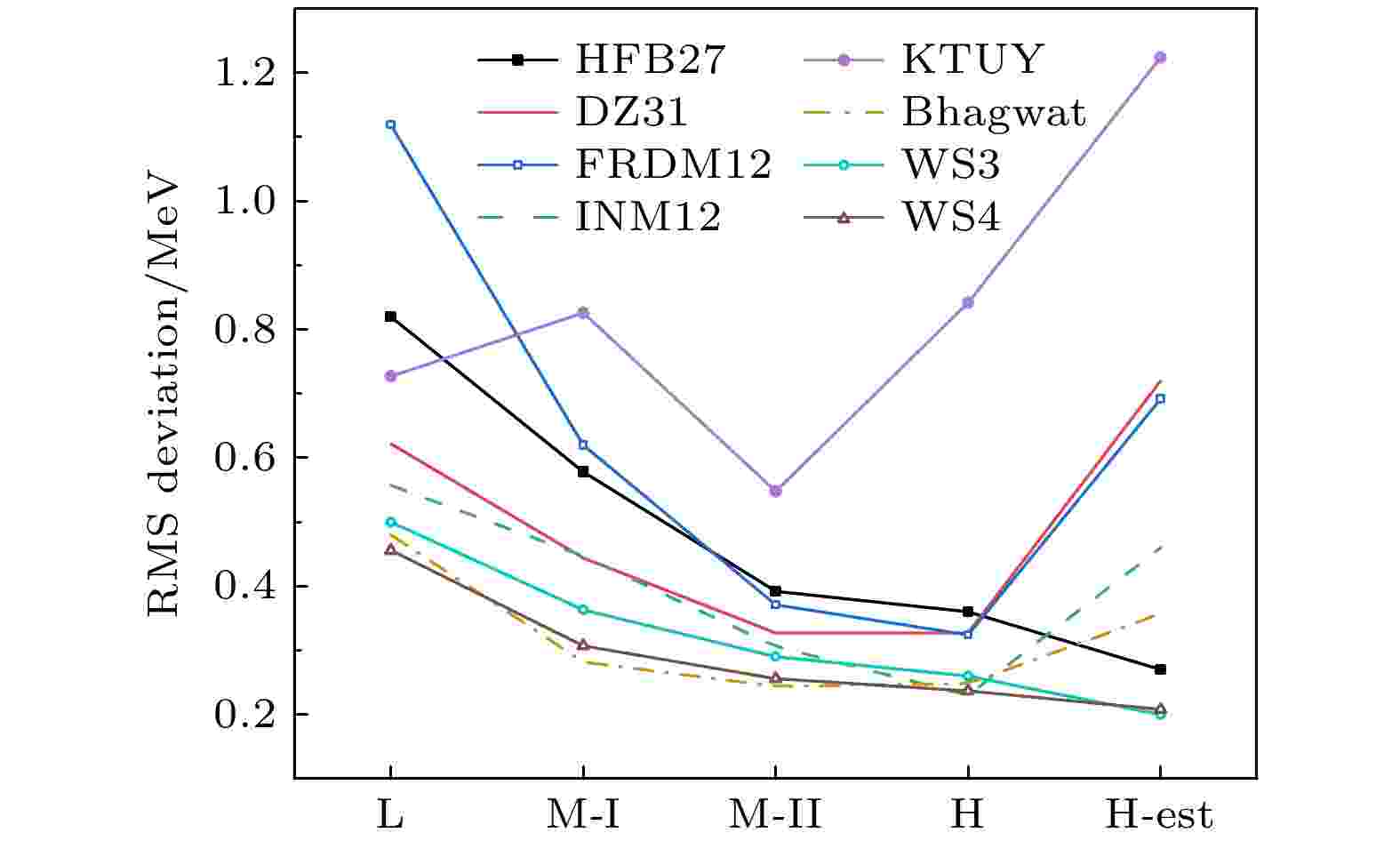
EDITOR'S SUGGESTION
2021, 70 (10): 102101.
doi: 10.7498/aps.70.20201734
Abstract +
The reliability and prediction ability of 8 global nuclear mass models is systematically analyzed in terms of the accuracy of the model and the new neutron magic number predicted by experiments based on the ground-state nuclear mass data from AME2016. The root-mean-square (RMS) deviations of nuclear mass predicted by 8 nuclear mass models are calculated by subregion, and find that the Bhagwat and WS4 models possess better accuracy to describe the existing experimental data. By analyzing the trend of the neutron shell energy gap varying with neutron number, it is found that the KTUY, WS3 and WS4 models can well represent the mutation behavior caused by the new magic number N = 32, and it is predicted that N = 32 is likely to be a new magic number in the Cl isotope chain and Ar isotope chain. By analyzing the variation trend of α decay energy in the superheavy region, it is found that the FRDM12, WS3 and WS4 models can reproduce the phenomena of subshell with N = 152 and N = 162 well, and predict the relatively long life of nuclei at the neutron number N = 184 for the isotope chain with proton number Z = 108—114. The comprehensive analysis shows that the mass model with good accuracy cannot reproduce shell evolution behavior. For example, the Bhagwat model has the same accuracy as the WS4 model, but it cannot reproduce the mutation behavior of the new magic number N = 32, 152 and 162. But the KTUY model and FRDM12 model can reproduce the new magic number behavior of N = 32, 152 and 162, respectively, although the RMS deviation is slightly larger. The RMS deviation of WS4 model is small and can describe the shell evolution behavior in the nuclear mass well.
ATOMIC AND MOLECULAR PHYSICS

2021, 70 (10): 103201.
doi: 10.7498/aps.70.20210102
Abstract +
Based on the Electromagnetically-Induced-Transparency (EIT) effect of cesium Rydberg atoms, the dispersion of the probe light will experience a drastically change while the absorption is diminished, as the frequency of it is resonated with that of the corresponding atomic transition. In this case, as the light pulse propagates in the atomic medium, the group velocity of the pulse will be slowed. In the cesium atoms 3-ladder-level system ($ 6{\rm S}_{1/2}\rightarrow6{\rm P}_{3/2}\rightarrow49{\rm D}_{5/2} $ ),the frequency of the probe light is locked at the resonance transition of $ 6{\rm S}_{1/2}\rightarrow6{\rm P}_{3/2} $ , while the transmission signal of 852 nm probe light is measured by scanning the coupling light frequency near the transition of $ 6{\rm P}_{3/2}\rightarrow49{\rm D}_{5/2} $ , We observed the EIT phenomenon and explored the relationship between the power of coupling laser and linewidth of the EIT signal. The experimental results show that the linewidth of the EIT signal is proportional to the power of the coupling laser. Then under the two-photon resonance condition, the deceleration of the probe light pulse caused by the steep change of the dispersion curve is observed. We also systematically investigate the influences of coupling optical power and temperature of vapor cell on the slowing down of light pulse. The experimental results show that the weaker the coupled light was, the longer the delay time; and the higher the temperature of the atomic gas chamber was, the more obvious the deceleration effect would be observed, those of which are consistent with the theoretical calculations. The investigation of the deceleration of optical pulses based on the Rydberg Electromagnetically-Induced-Transparency is important for understanding the coherence mechanism of 3-ladder-level system and some potential applications, such as in Rydberg-atom-based electric field metrology. This research provides a new tool for the measurement of pulsed microwave electric field through the optical pulse deceleration effect.
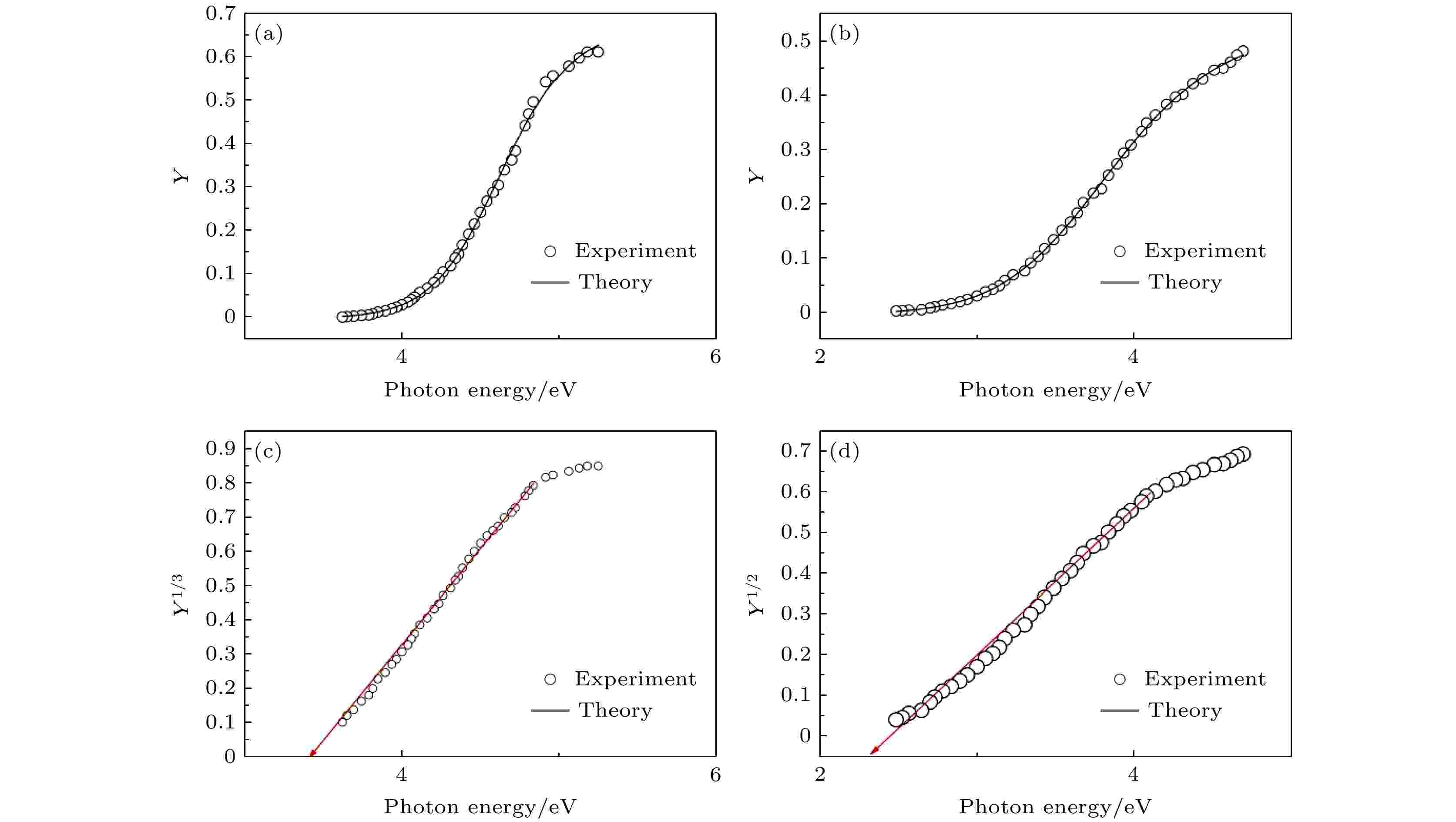
2021, 70 (10): 103301.
doi: 10.7498/aps.70.20201729
Abstract +
Experimental and theoretical research on photoelectron yield spectrum play a crucial role in electronic and photo-electronic materials and devices, and the reliable and precise estimation of photoelectron yield via photon energy is very important for detecting microscopic electrical information in photo-electronic materials and devices. Photoelectron yield is defined as the number of electrons emitted by per incident photon. Before this work, the technique was based on the interception of a plot of square root of photoelectron yield versus photon energy for metal-insulator hetero-junction, and that of a plot of cube root of photoelectron yield variation with photon energy for insulator-semiconductor hetero-junction. But, how to intercept the relationship between photoelectron yield and photon energy for semiconductor-semiconductor and metal-semiconductor hetero-junctions has not been known. Besides, many experimental plots of square root and cube root of photoelectron yield against photon energy are available, but none of them is a straight line. In order to obtain a more accurate and reliable barrier height, electrical structure of the junction, the energy level distribution of the energy band offset, defect density in the junction, and the valence band profile through the photoelectric yield spectrum, a reliable and accurate model of photoelectron yield spectrum is established via combining the solution to a differential equation and experimental results. A method is proposed to naturally determine the junction barrier height by using the experimental results of the internal current yield varying with the photon energy. The this method can be used to calculate the junction barrier height as accurately and reliably as possible, and the density and energy level distributions of the effective occupancy states of the electrons in the four junctions are obtained by using this photoelectric yield spectrum model, In addition, based on this model, this paper proves mathematically that the density and energy level distribution of the effective occupancy state of electrons present a peak shape. Therefore, the application prospects of this photoelectric yield spectrum model are demonstrated.
ELECTROMAGNETISM, OPTICS, ACOUSTICS, HEAT TRANSFER, CLASSICAL MECHANICS, AND FLUID DYNAMICS

2021, 70 (10): 104101.
doi: 10.7498/aps.70.20201781
Abstract +
Over the last two decades, the grating-based phase-contrast imaging has aroused the interest of a number of researchers. It could provide an access to three complementary signals simultaneously: the conventional absorption contrast, the differential phase contrast related to refraction of incident wave, and the dark-field contrast that relates to ultra small angle scattering in a sample. The grating-based phase-contrast signals have higher contrast sensitivity for some types of soft samples than the absorption signals. Dark-field signals have better diagnostic effects in the detection of lung tumors, pneumothorax and the identification of microcalcifications in breast. There are two main phase retrieval methods in grating-based X-ray phase-contrast imaging, i.e. phase stepping method and Fourier transform method. The phase signals retrieved by phase stepping is high precise and has low noise. But the sample suffers high dose due to at least three exposures. The phase signals retrieved by Fourier transform is low-dose due to the fact that only one image with sample is needed, but it is easily affected by artifacts when the size of the filtering window is too large. However, when the size of the filtering window is too small, the high-frequency information of the phase-contrast image will be lost, and the image will become blurred. A trade-off between definitions of the image and artifacts should be made. Since the phase-contrast signal and the dark-field signal of the sample are modulated by carrier fringes, the frequency spectrum of the detected image consists of many different harmonics. The artifacts in the retrieved signals originate from the spectrum aliasing between primary peak around zero spatial frequency and first-order harmonic peaks. Therefore, the subtraction between two images with phase difference can remove the primary peak, and the artifacts in the phase-contrast signals and dark-field signals will be suppressed. In order to further suppress the artifacts, we increase the frequency of carrier fringes, which results in a larger distance between first-order harmonic peaks in frequency domain. We finally attain artifact-free phase-contrast images and dark-field images while maintaining high definition of the images. The method proposed here is not only applicable to incoherent imaging system, but also to Talbot-Lau interferometer, and it would be useful in fast and low-dose X-ray phase-contrast and dark-field imaging.
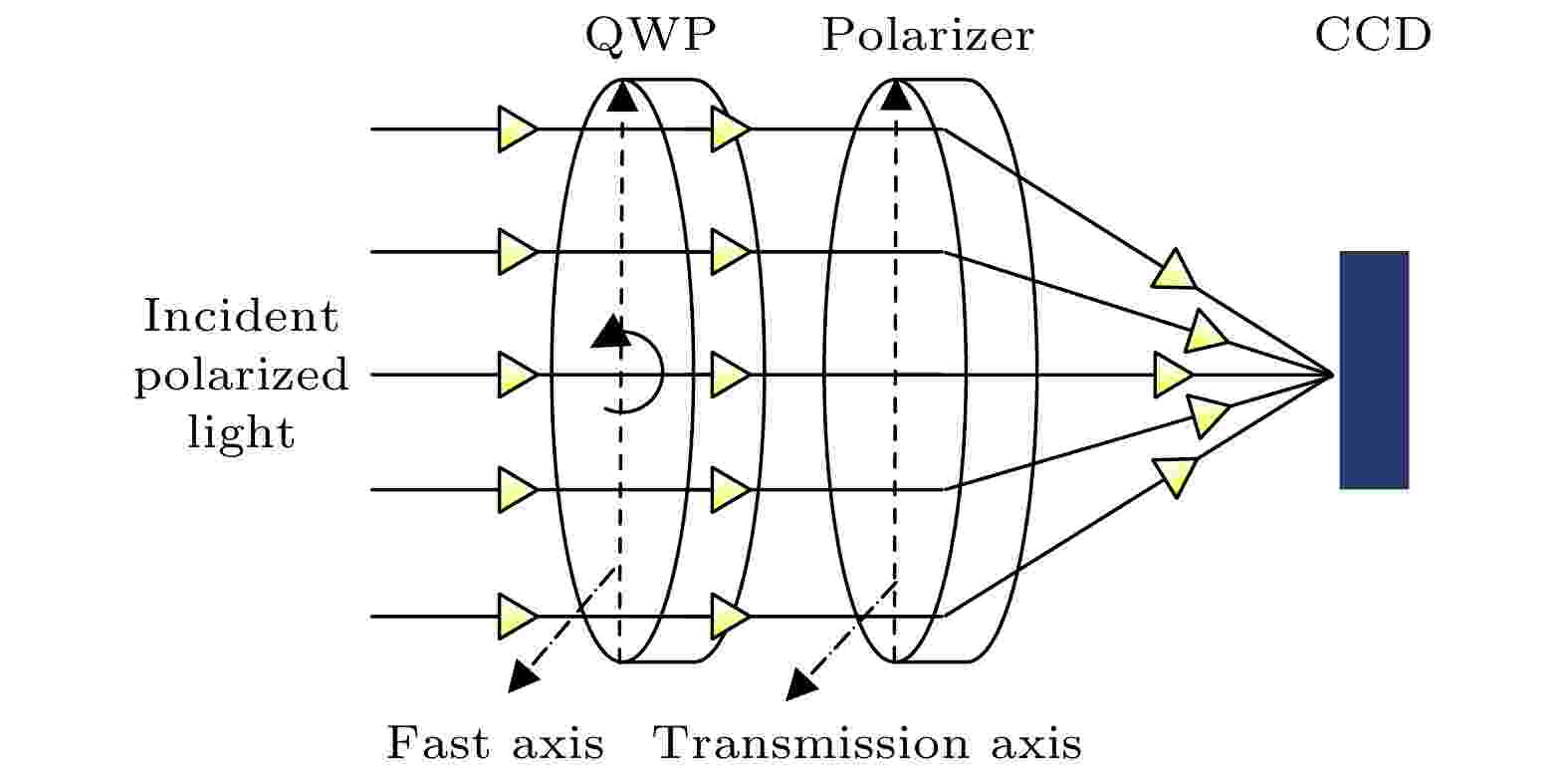
2021, 70 (10): 104201.
doi: 10.7498/aps.70.20210104
Abstract +
Full polarization imaging can obtain more information about target, which has a broad application prospect in the target detection, researches of atmospheric characteristics, and medical diagnosis. This paper develops an imaging system of polarized skylight pattern of full polarization for obtaining the information about full polarization rapidly. Meanwhile, aiming at the problem that the error of the light intensity image obtained by the system due to the different “behavior” of the system transmission matrix is brought into the solution of the target Stokes vector, this paper analyzes the condition number and determinant of the system transmission matrix. Firstly, an objective function is established by combining the three sets of condition numbers and the determinant. Therefore, the problem of solving the optimal transmission matrix is transformed into a multi-condition extremal problem. And then the objective function is minimized to determine the optimal angle of the transmission matrix when the 1 norm condition number, 2 norm condition number and ∞ norm condition number reach the minimum value and the determinant reaches the maximum value. In addition, in order to improve the measurement accuracy, the delay components of quarter wave plate, extinction ratio of polarizer, and the transmission matrix of the system are calibrated. Optimization contrast experiment and outfield experiment are performed. The entropy, mean, and standard deviation are used to quantify the optimized results of the angle of polarization, degree of polarization, and degree of linear polarization. ∆Aop is defined as the difference in absolute value of angle of polarization between the two sides of the symmetry axis to verify the optimization performance of angle of polarization. Experimental results show that the polarization angle error after optimization is reduced by more than 10% compared with that before optimization; the error of the band of maximum polarization and the error of the neutral zone in the degree of polarization and linear polarization also decline to different degrees compared with before optimization. On this basis, an experiment on measuring external field full polarization information is carried out. The results show that the system meets the design requirements and can effectively obtain the sky full polarization information.
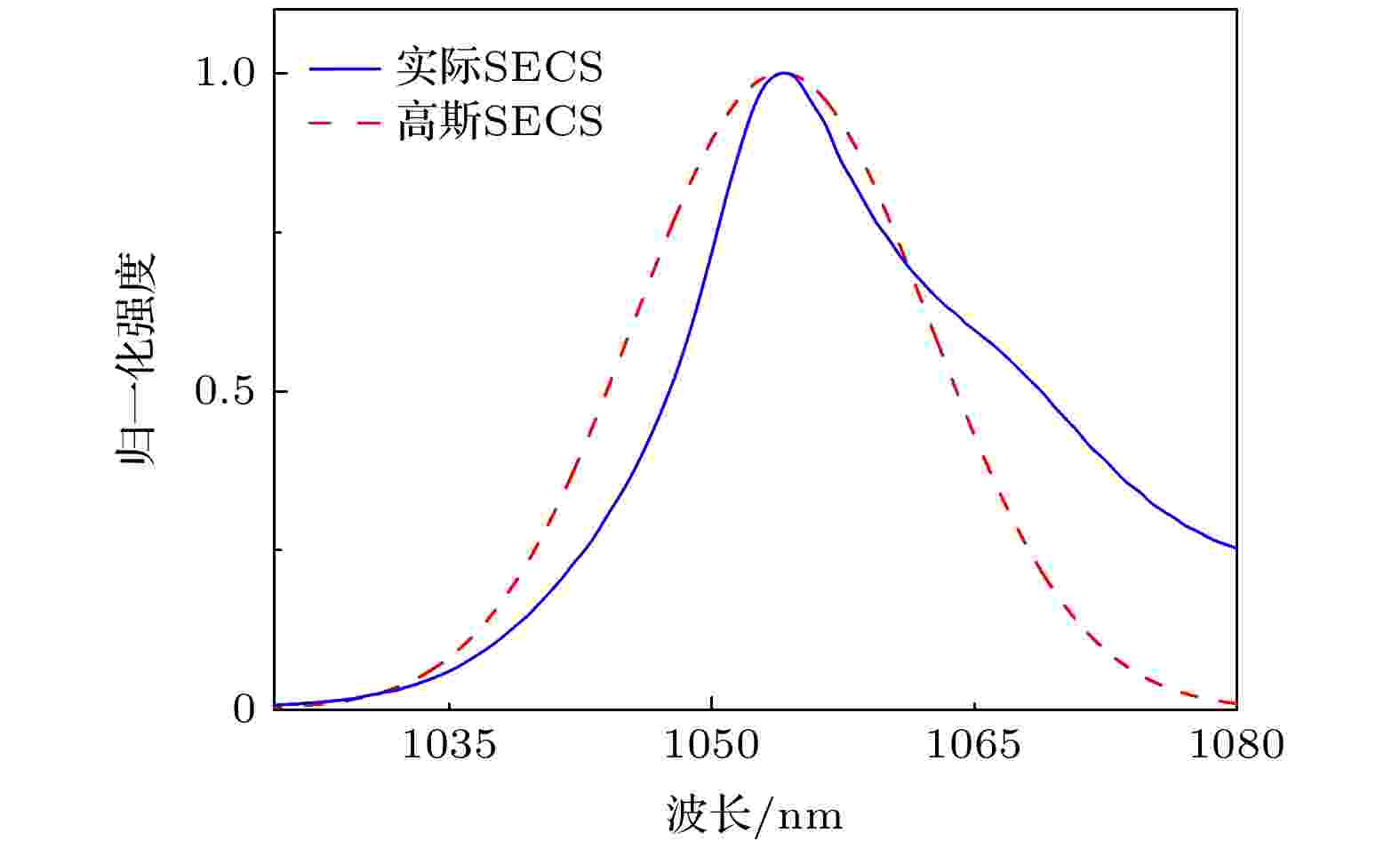
2021, 70 (10): 104202.
doi: 10.7498/aps.70.20201830
Abstract +
In order to accurately analyze the broadband pulsed amplification performances of the domestic picosecond petawatt laser system, which uses large aperture N31 or N41 neodymium glass as gain medium, the broadband pulsed amplification model is improved by introducing the actual stimulated emission cross section (SECS) of neodymium glass. Comparing with the SECS under Gaussian approximation, the amplified pulsed spectrum gain narrowing effect with different SECSs are analyzed. It is found that in the actual SECS of N31 neodymium glass laser, the gain-narrowing effect is enhanced, the output energy decreases, gain’s saturation effect weakens, system’s accumulated B integral augments, but the laser system turns insensitive to the center wavelength simultaneously. Based on the Shenguang II high energy picosecond petawatt laser system which uses N31 neodymium glass, the spectral shape, center wavelength, and energy stability of amplified output pulse are simulated by using different SECSs. It is shown that the super-Gaussian spectral shape narrows more greatly than Gaussian spectral shape, the spectrum bandwidth narrows from 10 to about 3 nm with gain larger than 107, and the accumulated B integral increases to 1.7. Additionally, the gain-narrowing effect makes the output spectrum (with 1054 nm of center wavelength) less affected by changing the inputted center wavelength from 1052 to 1056 nm, and the gain saturation effect can improve output energy stability to less than 2% (root mean square (RMS)) with about 3% (RMS) inputted energy stability, which are beneficial to the subsequent pulse compression and physical experiment. Based on the above analysis, a broadband pulsed amplified experiment is conducted by using Shenguang II petawatt laser system, the injected seed is about 10 nm (full width at half maximum (FWHM)) with 5 order super Gaussian shape at 1054-nm center wavelength, and 1.2 mJ with 3% (RMS) energy stability from optical parametric chirped pulse amplification. The amplified pulse with 1900 J at 1054.2 nm (3 nm FWHM) and stability < 2% (shot to shot) is achieved, and the spectral shapes and bandwidths after bar and disk amplifiers are measured, which are consistent with theoretical analysis results. The results can provide a necessary reference for constructing high energy broadband laser system and improving its performances in the future.
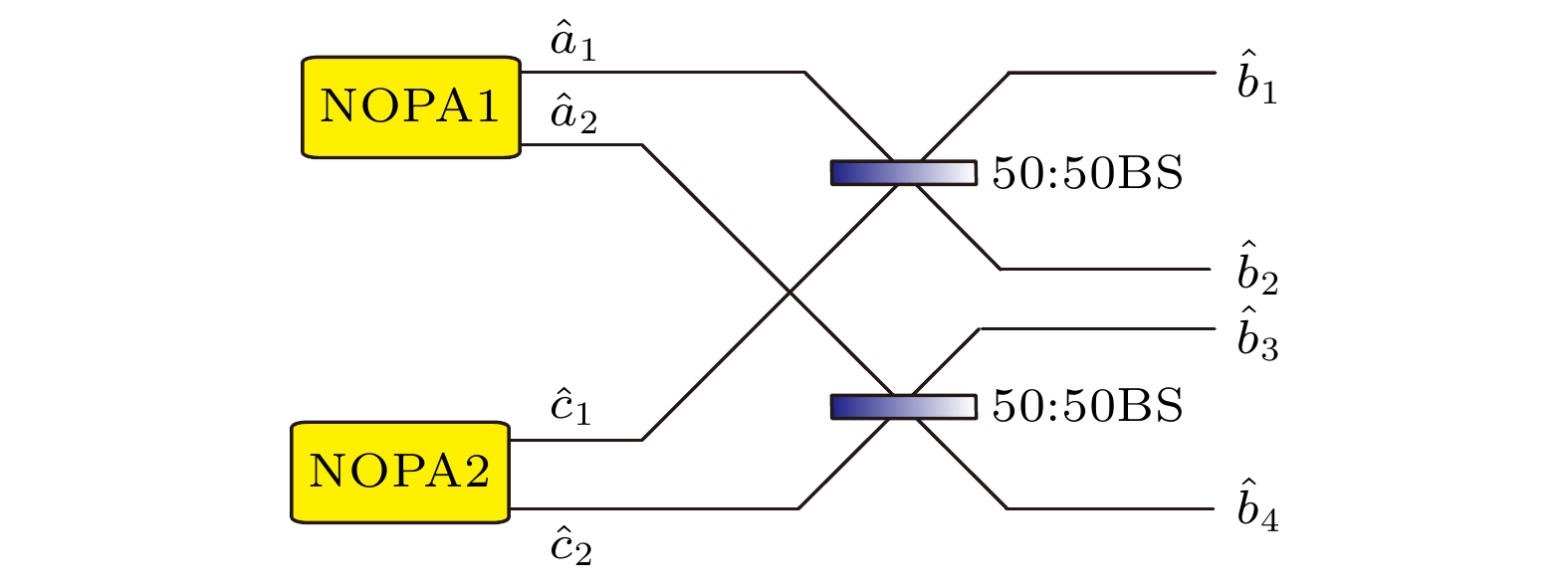
EDITOR'S SUGGESTION
2021, 70 (10): 104203.
doi: 10.7498/aps.70.20201749
Abstract +
Quantum teleportation is one of the most basic quantum protocols, which transfers an unknown quantum state from one location to another through local operation and classical communication by using shared quantum entanglement without physical transfer of the information carrier. And it has been widely used in various quantum information protocols such as entanglement swapping, quantum repeaters, quantum gate teleportation, quantum computation based on measurement, and quantum teleportation networks, which have important application value in quantum computation and quantum information. Quantum teleportation is a naturally bipartite process, in which an unknown quantum state can only be transmitted from one node to another. With the further development of quantum information research, it is necessary to transfer quantum states or quantum information among more and more nodes. Multipartite quantum protocols are expected to form fundamental components for larger-scale quantum communication and computation. A bipartite quantum teleportation should be extended to a multipartite protocol known as a quantum teleportation network. In this paper, a multifunctional quantum teleportation network is proposed theoretically. We first propose a special method of constructing four-partite quantum resources in continuous variables (CVs), and based on this, construct two different types of CV quantum teleportation networks. One type of network contains just one quantum teleportation process consisting of a sender, a receiver and two controllers. In this type of network, the unknown quantum state can be recovered at any other node according to the requirement after the measurement in the input node, which enriches the transfer direction and transfer mode of the unknown quantum state. And meanwhile, the two controllers can control the transfer of a quantum state from the sender to the receiver by restricting the sender and receiver’s access to their information, which makes the quantum teleportation network controllable. The other type of network has two quantum teleportation processes, each containing only a sender, a receiver and no controllers, which increases the number of quantum states that can be transmitted. Then we analyze the dependence of the fidelity of each quantum teleportation network on different physical parameters, and compare the characteristics, advantages and disadvantages among different types of quantum teleportation networks. The scheme for constructing a multifunctional quantum teleportation network in this paper shows some advantages, such as the greater number of quantum nodes, diversity of types, simple operation procedure. And all these advantages provide a broader application prospect for establishing larger and more complex quantum information networks in the future and quicken the pace of the application of quantum information.

EDITOR'S SUGGESTION
2021, 70 (10): 104204.
doi: 10.7498/aps.70.20201778
Abstract +
Focusing on the frequency division multiplexing technology in the applications of large scale optical communication, the double-channel optical gain spectrum with two frequency bands is studied in this paper. The double-channel gain spectrum, named probe channel and four wave mixing channel, comes from a co-propagating degenerate four wave mixing in a hot atomic ensemble. The intention is to divide the gain spectrum into several sub frequency bands through dressed four wave mixing. When a dressed field is exerted on one transition that shares the common excited state with the degenerate four wave mixing, the excited state can experience dressed splitting. It opens two transition paths for the degenerate four wave mixing simultaneously. Because of quantum interference between the two paths, the degenerate four wave mixing are suppressed at two-photon resonance. Consequently, Autler-Townes splitting appears in the gain spectrum, i.e. spectrum is changed from single frequency band into two “M”-type bands. In this paper, the nonlinear density matrix element describing the degenerate (dressed) four wave mixing is solved through perturbation theory, and then the gain spectrum in Doppler broadening atomic medium is plotted, and its Autler-Townes splitting is analyzed by using the dressed-state theory. It shows that the Autler-Townes splitting depends on both the Rabi frequency and single photon detuning of the dressed field. Relevant experiment is performed in cesium vapor at 60 ℃, a pair of high-gain optical spectra with two frequency bands for both double channels is successfully obtained. Moreover, the Autler-Townes splitting as a function of the dressed field intensity and single photon detuning are studied quantitatively. The experimental results accord well with the theoretical predictions. Compared with the degenerate four wave mixing, the atom-field coupled system is changed from an original open two-level into a closed Λ three-level due to the external dressed field, which greatly improves the atomic population on the coherent ground state via optical pumping, and therefore enhancing the gain significantly. This work is important for the field of atom-based optical communication. It provides an optional way of conveying multi-frequency information to the two parallel channels as well as improving the gain of four wave mixing.

2021, 70 (10): 104205.
doi: 10.7498/aps.70.20202034
Abstract +
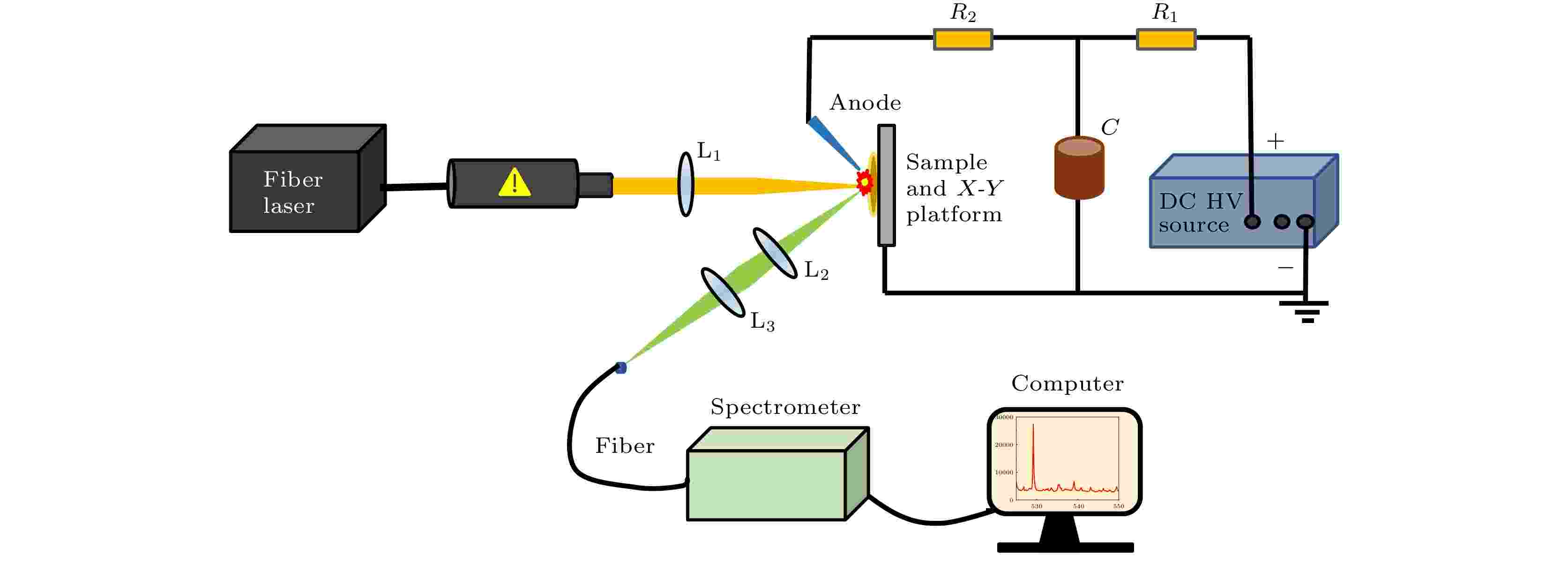
2021, 70 (10): 104206.
doi: 10.7498/aps.70.20202018
Abstract +
Bismuth brass has very good mechanical properties and is friendly to environment. Therefore, it can be widely used in different fields. In order to realize the convenient, rapid and sensitive elemental analysis of trace elements in bismuth brass, fiber laser based high repetition rate laser-ablation spark-induced breakdown spectroscopy (HRR LA-SIBS) is developed. In the experiments, a compact fiber laser operated at 5 kHz pulse repetition rate is used to ablate the sample and produce plasma, and the spark discharge is used to further break down the ablated sample and enhance the plasma emission for sensitive elemental analysis. A compact fiber-optic spectrometer coupled with non-intensified charge-coupled device (CCD) is used to record the spectra. Bismuth, lead and tin in several bismuth brass standard samples are quantitatively analyzed. The plasma temperature is determined to be about 7962 ± 300 K by using the Boltzmann plots of copper, zinc and tin elements; the electron density is determined to be about 1.049 × 10–17 cm–3 based on the Stark broadening of Cu (I) 510.47 nm analytical line. The plasma is determined to be in local thermodynamic equilibrium (LTE) state according to McWhirter criterion as well as appended criteria for transient plasma. Under the present experimental condition, the calibration curves of bismuth, lead and tin in bismuth brass are built with fitting goodness of higher than 95%. The detection limits of bismuth, lead and tin are determined to be 25.5 ppm, 64.2 ppm and 316.5 ppm, respectively. The weak transition probability of tin atoms leads to worse detection limit of tin than the scenarios of bismuth and lead. The ways to further improve the analytical sensitivity and minimize system dimensions are discussed in this article. It is demonstrated that high repetition rate laser-ablation spark-induced breakdown spectrometer based on compact fiber laser as well as compact fiber-optic spectrometer can be used to realize the convenient, rapid and sensitive elemental analysis of trace elements in bismuth brass. This study is also helpful in analyzing the trace harmful elements, including bismuth, lead and tin in high temperature alloys with HRR LA-SIBS. In comparison with laser-induced breakdown spectroscopy (LIBS), the HRR LA-SIBS technique has several intrinsic advantages, such as fast spectral data collection speed, cost-effective system and low continuum background and so on. This technique is very useful in implementing the elemental analysis of different alloy samples and can be potentially used in metallurgical industry in the future.

2021, 70 (10): 104207.
doi: 10.7498/aps.70.20201773
Abstract +
Plasma nanostructures are of particular significance for serving as a substrate for spectroscopic detection and identification of individual molecules. By combining the excitation wavelength of the molecule with the resonance wavelength of the nanostructure, the sensitive single-molecule Raman detection can be achieved. A high and stable plasma substrate for coherent anti-Stokes Raman scattering(CARS) is very useful for developing the surface-enhanced coherent anti-Stokes Raman scattering (SECARS). In the plasma nanostructures, the strong coupling of plasmonic nanoparticles with an inter-particle gap smaller than the diameter of the individual nanoparticles results in the hybridization of the optical properties of these individual nanoparticles. There are also the charge transfer plasmons(CTP) appearing in conductive bridging nanoparticles. Their unique properties make linked nanosystems a suitable candidate for building artificial molecules, nanomotors, sensors, and other optoelectronic devices. In this work, we, starting from reality, theoretically design a new linked nanosystem SECARS substrate where Fano resonance can be generated by the plasmon hybridization (PH) model resonance and the charge transfer plasmon resonance. The introduction of charge transfer plasma improves the tunability of structural resonance. By adjusting the conductivity of the conductive junction, the wavelength of the charge transfer plasma resonance can be easily adjusted to change the wavelength position of the Fano resonance. The data obtained by numerical simulation of the Raman mode at 1557 cm–1 of L-tryptophan when a 1064 nm light source is used as the pump light show that this spatially symmetrical structure can generate multiple high-enhancement hot spots that do not depend on the polarization direction of the incident light. Ordinary CARS signal can generally be enhanced by 1012, and its maximum can reach 1014. Due to the ultrastrong field enhancement and insensitive-to-polarization, this method of using charge transfer plasma to design a substrate can be used in the practical substrate of SECARS and provide new ideas for designing other nonlinear optical processes such as four wave mixing and stimulated Raman scattering.
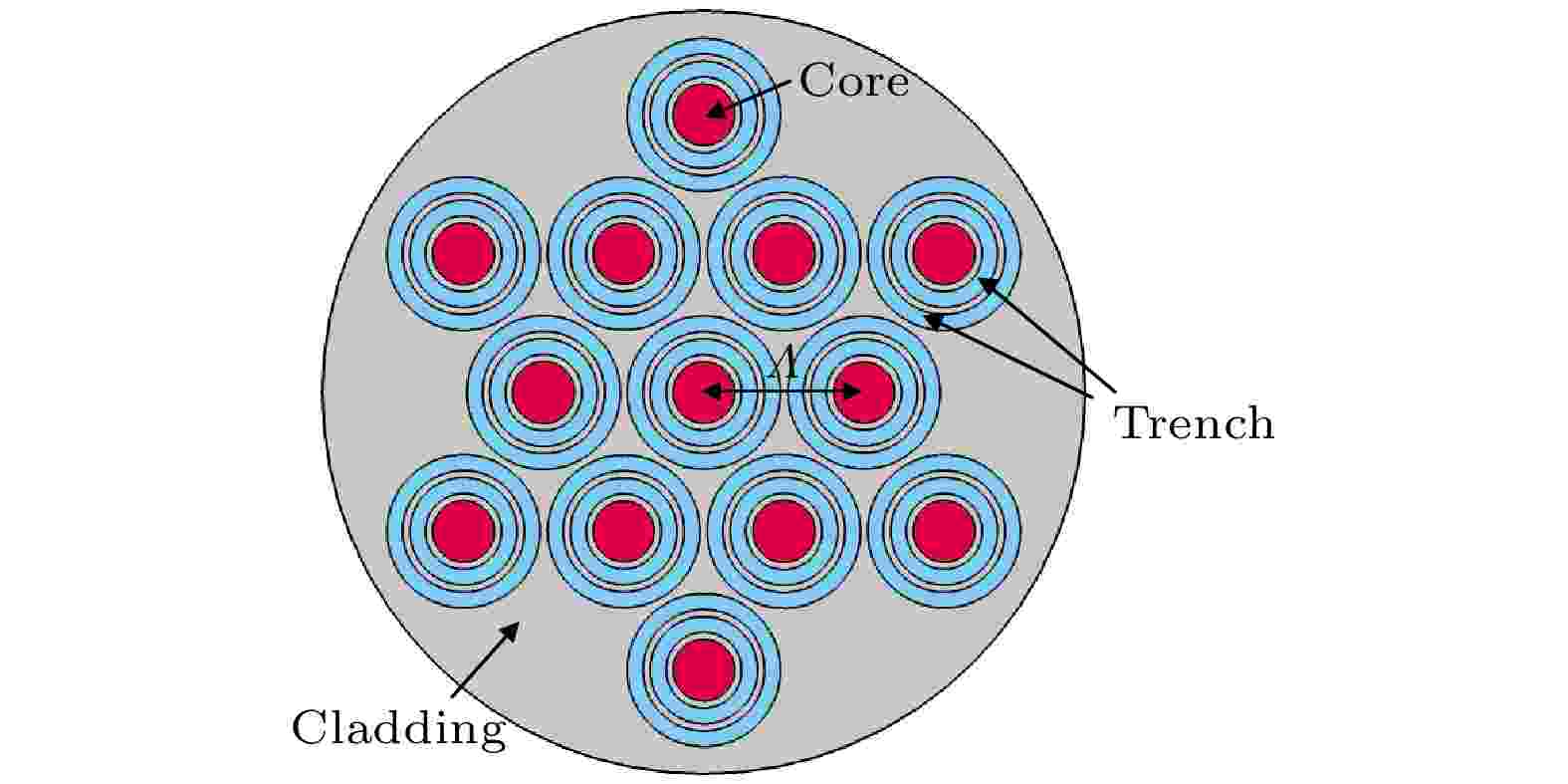
2021, 70 (10): 104208.
doi: 10.7498/aps.70.20201825
Abstract +
Information technology has an increasingly strong demand for high-speed and large-capacity optical fiber networks. Space division multiplex(SDM) is a new generation of optical fiber communication technology which can be several times in communication capacity higher than the wavelength division multiplexing systems. In this paper, we present a kind of 13-core 5-mode fiber with double trench structure to meet the demand for high-speed and large-capacity information transmission in the future. In order to solve the crosstalk problem in SDM, a double-trench structure is adopted to better limit the light energy in the fiber core, thus reducing the crosstalk between cores and modes. The crosstalk and transmission characteristics of multi-core fiber are calculated and analyzed by the full vector finite element method and coupled power theory. After the optimization of structural parameters, the fiber can stably transmit LP01, LP11, LP21, LP02 and LP31 in the band of 1.3–1.7 μm; when the signal is transmitted at the 1.55 μm for 60 km, the inter-core crosstalks corresponding to the adjacent fiber cores in the above five modes are –122.37 dB, –114.76 dB, –106.28 dB, –100.68 dB and –92.813 dB, respectively; the effective refractive index difference between adjacent modes is greater than 1.026 × 10–3; inter-core and inter-mode crosstalk can be effectively suppressed. The corresponding non-linear coefficients of the 5-modes are 0.74 W–1·km–1, 0.82 W–1·km–1, 0.88 W–1·km–1, 1.26 W–1·km–1, 0.93 W–1·km–1, which can maintain low non-linear transmission. The structure of fiber is simple and compact, and the preform can be fabricated by vapor deposition method and stack method, then the 13-core five-mode fiber with low crosstalk and low nonlinear can be further drawn, which can be used in a long distance high-speed and large-capacity fiber transmission system.
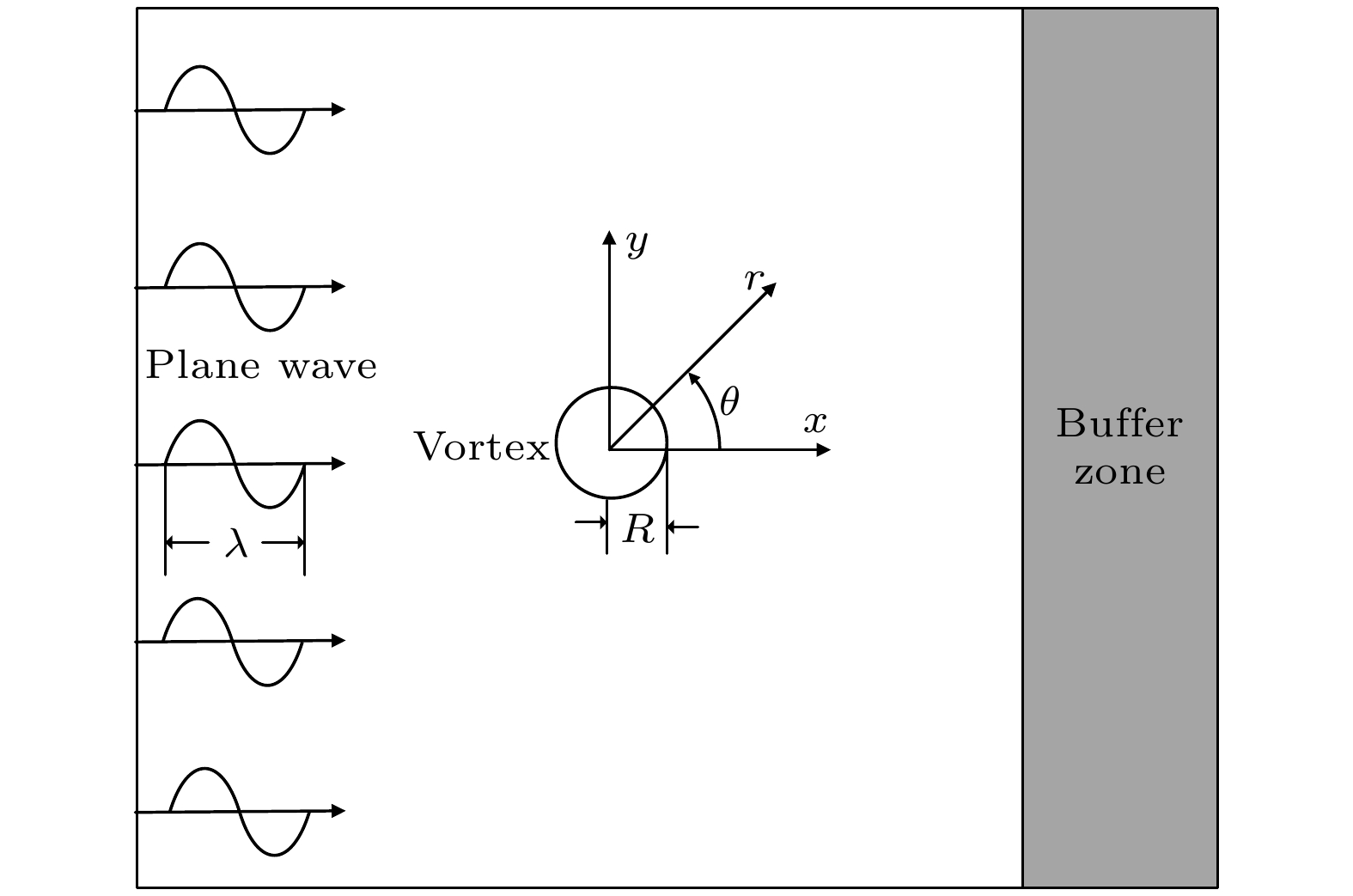
2021, 70 (10): 104301.
doi: 10.7498/aps.70.20202206
Abstract +
When acoustic waves propagate through a volume of vortical flows, the strong nonlinear scattering lead the amplitude, the frequency, and the phase of the incident waves to change obviously. As one of the most significant problems in the area of aeroacoustics, the scattering of acoustic waves by a vortical flow plays a main role in industrial applications and scientific research. In this study, we start from an elementary vortex model. The scattering of plane acoustic waves from a Taylor vortex is investigated by solving two-dimensional Euler equations numerically in the time domain. To resolve the small-amplitude acoustic waves, a sixth-order-accurate compact Padé scheme is used for spatial derivatives and a fourth-order-accurate Runge-Kutta scheme is used to advance the solution in time. To minimize the reflection of outgoing waves, a buffer zone is used at the computational boundary. The computations of scattered fields with very small amplitudes are found to be in excellent agreement with a benchmark provided by previous studies. Simulations for the scattering from a Taylor vortex reveal that the amplitude of the scattered fields is strongly influenced by two dimensionless quantities: the vortex strength ${M_v}$ and the length-scale ratio $\lambda /R$ . Based on a global analysis of scale effects of these two dimensionless quantities on the scattering cross-section, the whole scattering domain defined on the ${M_v} - \lambda /R$ plane is divided into three subdomains. As the vortex strength ${M_v}$ increases and the length-scale ratio $\lambda /R$ decreases, the acoustic scattering from a compact vortex goes through the long-wavelength domain, the resonance domain, and the geometrical acoustics domain in turn. The associated scattered fields with the increasing of intensity show more irregularities. The scattering in the long-wavelength domain possesses four primary beams described by half-sine functions, which scales as ${M_v}{\left( {\lambda /R} \right)^{ - 2}}$ . In particular, the directivity of the scattered field with a very low Mach number and a very long wavelength behaves as ${M_v}{\left( {\lambda /R} \right)^{ - 2}}\left| {\sin \left( {\theta /2} \right)} \right|$ . In the resonance domain, the beams in the opposite direction to the incident waves decay rapidly. The rest of two beams follow the ${M_v}$ scaling. The scattered fields are concentrated around the direction of the incident wave in the geometrical acoustics domain, where the primary beams are surrounded by several small sub-beams. The physical mechanism of the acoustic scattering caused by a vortex involves two different mechanisms, namely nonlinear scattering effect and linear long-range refraction effect.
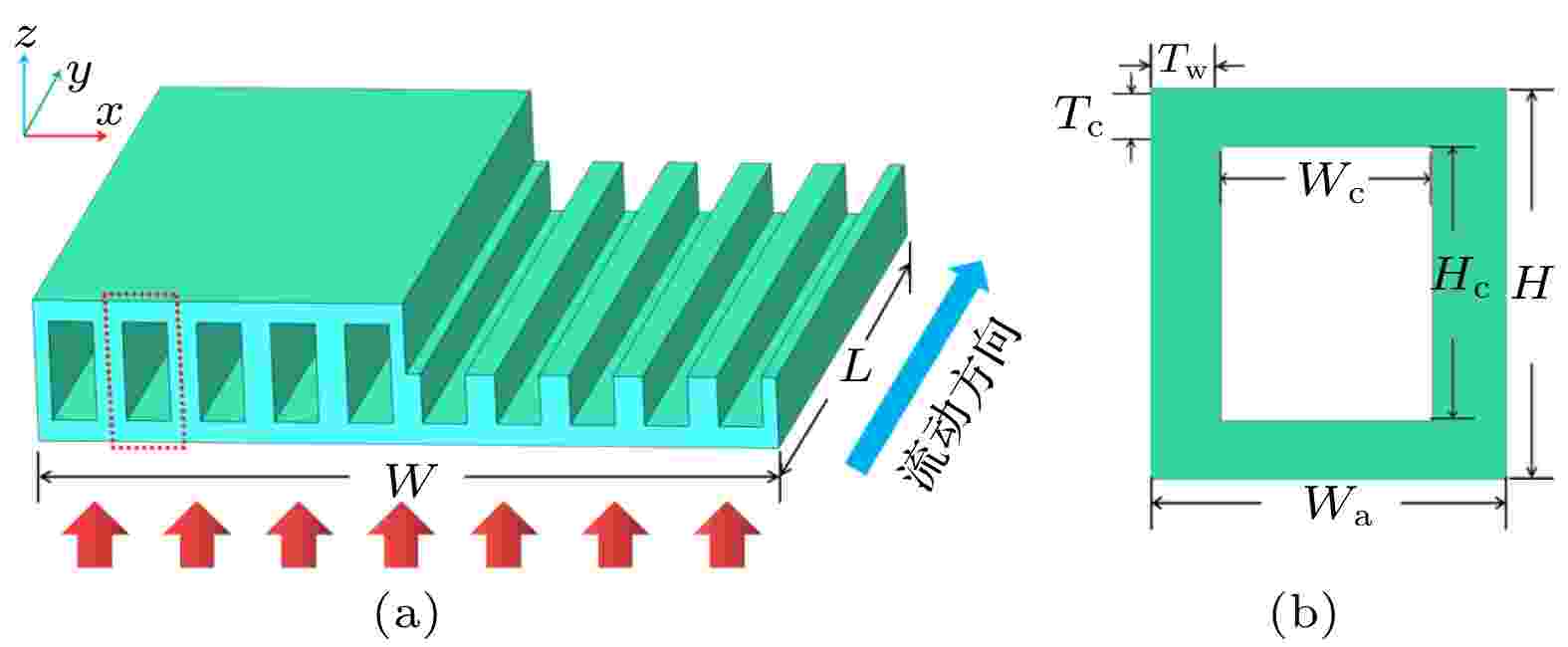
2021, 70 (10): 104401.
doi: 10.7498/aps.70.20201802
Abstract +
Microchannel heat sinks have important applications in integrated circuits, but the current traditional long straight microchannel heat dissipation process causes uneven temperature and low heat dissipation efficiency. In this paper, a periodic split-flow microstructure is designed and integrated with traditional microchannels to form a periodic split-flow microchannel heat sink. Numerical simulation is used to study the influence of the number, the arrangement and structural parameters of microstructures in a single microchannel on its thermal performance. The simulation results show that the split-flow microstructure can increase the heat exchange area, break the original laminar boundary layer, promote the mixing of cold/hot coolant, and significantly improve the heat dissipation performance of the microchannel. Through comparative experiments, 9 groups are finally determined as the optimal number of microstructures in a single microchannel. At a heat flux of 100 W/cm2, when the coolant flow rate at the inlet is 1.18 m/s, after 9 groups of microstructures are added into a single microchannel, the maximum temperature drops by about 24 K and the thermal resistance decreases by about 44%. The Nusselt number is increased by about 124%, and the performance evaluation criterion (PEC) reaches 1.465. On this basis, the microstructure adopts a staggered gradual periodic arrangement to avoid the long-distance non-microstructure section between the two groups of microstructures. The turbulence element that gradually widens along the flow direction makes the coolant fully utilized. This results in a reduction in the high/low temperature zone and alleviates the temperature gradient that exists along the flow direction of the heat dissipation surface, and the pressure drop loss is also reduced to a certain extent compared with the pressure drop in the uniform arrangement, and the comprehensive thermal performance is further improved. It shows broad application prospects in the field of high-power integrated circuits and electronic cooling.
PHYSICS OF GASES, PLASMAS, AND ELECTRIC DISCHARGES
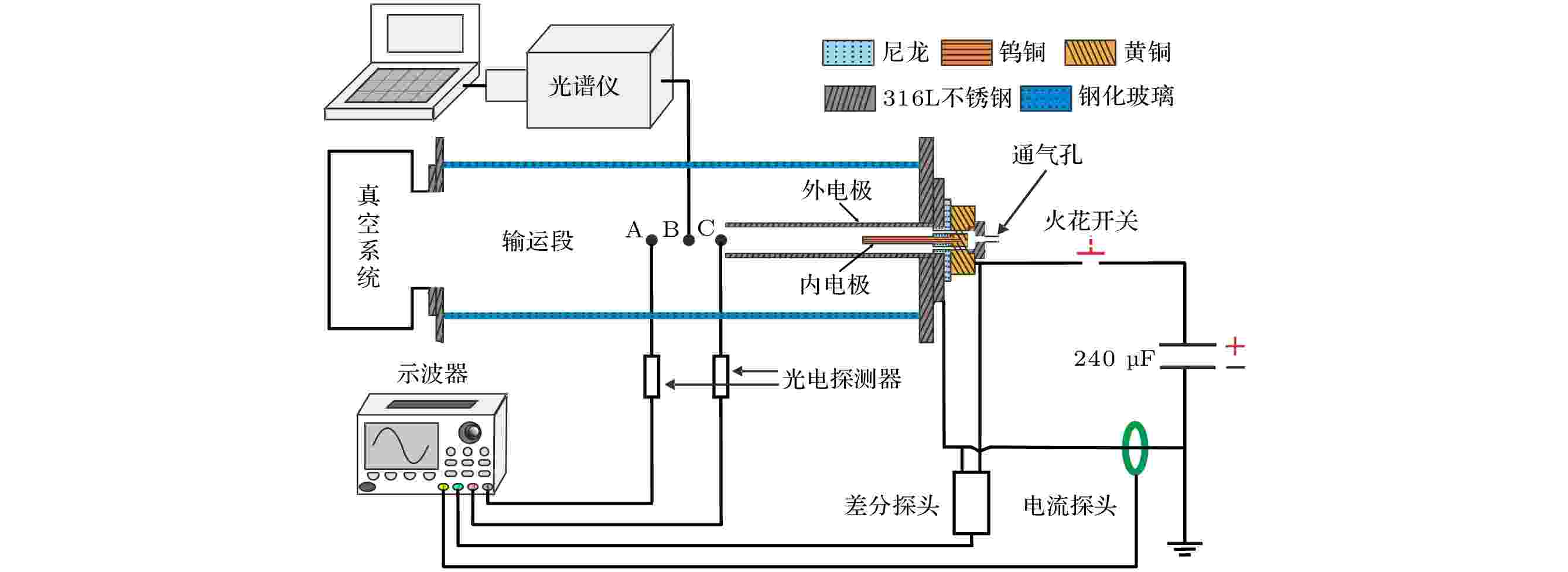
2021, 70 (10): 105201.
doi: 10.7498/aps.70.20201724
Abstract +
The dense plasma produced by a coaxial gun possesses an extremely high velocity (~100 km/s), electron density (~1016 cm–3) and energy density (~1 MJ/m2), which has great potential applications in fusion energy, astrophysics and aerospace physics. Through the measurements of electrical and optical signals, as well as the temporal and spatial evolution of the ejected plasma, the plasma characteristics of two different outer electrodes in length are investigated. As the outer electrode is lengthened, the axial velocity, the collimation and the propagation distance of plasma are all enhanced while the electron density and the optical intensity decrease, this can be ascribed to the extension of plasma column formed by Z-pinch on the central electrode during the discharge. When moving across the end of the inner electrode, the plasma sheet can be stretched into a bow shape due to the Coulomb and Lorentz force. With the appearance of axial current, part of the plasma sheet near the head of the inner electrode converges toward the center, and then generates a plasma column with much higher electron density and temperature. On the one hand, the extending of the plasma column can match the outer electrode in length and therefore the plasma column gains longer accelerating time in the coaxial gun resulting in the growing of ejected velocity. On the other hand, it also brings higher losses of the charged particles and recombination rates between the plasma and the wall of electrodes, resulting in the decrease of electron density and optical intensity. Moreover, the axial kinetic energy, the electron density and the radial Lorentz force of ejected plasma are jointly responsible for the collimation and the attenuation characteristics in its propagation. As the axial velocity and electron density increase, the axial kinetic energy of ejected plasma increases, which induces a longer propagating distance. In contrast, with the electron density and radial Lorentz force growing, the density gradient and thermal expansion of ejected plasma are enhanced correspondingly, leading the energy density to decrease and finally the propagating distance to shorten. In conclusion, a high collimation plasma jet trends to generate in a high axial velocity, electron density and with a relatively long outer electrode.
CONDENSED MATTER: STRUCTURAL, MECHANICAL, AND THERMAL PROPERTIES
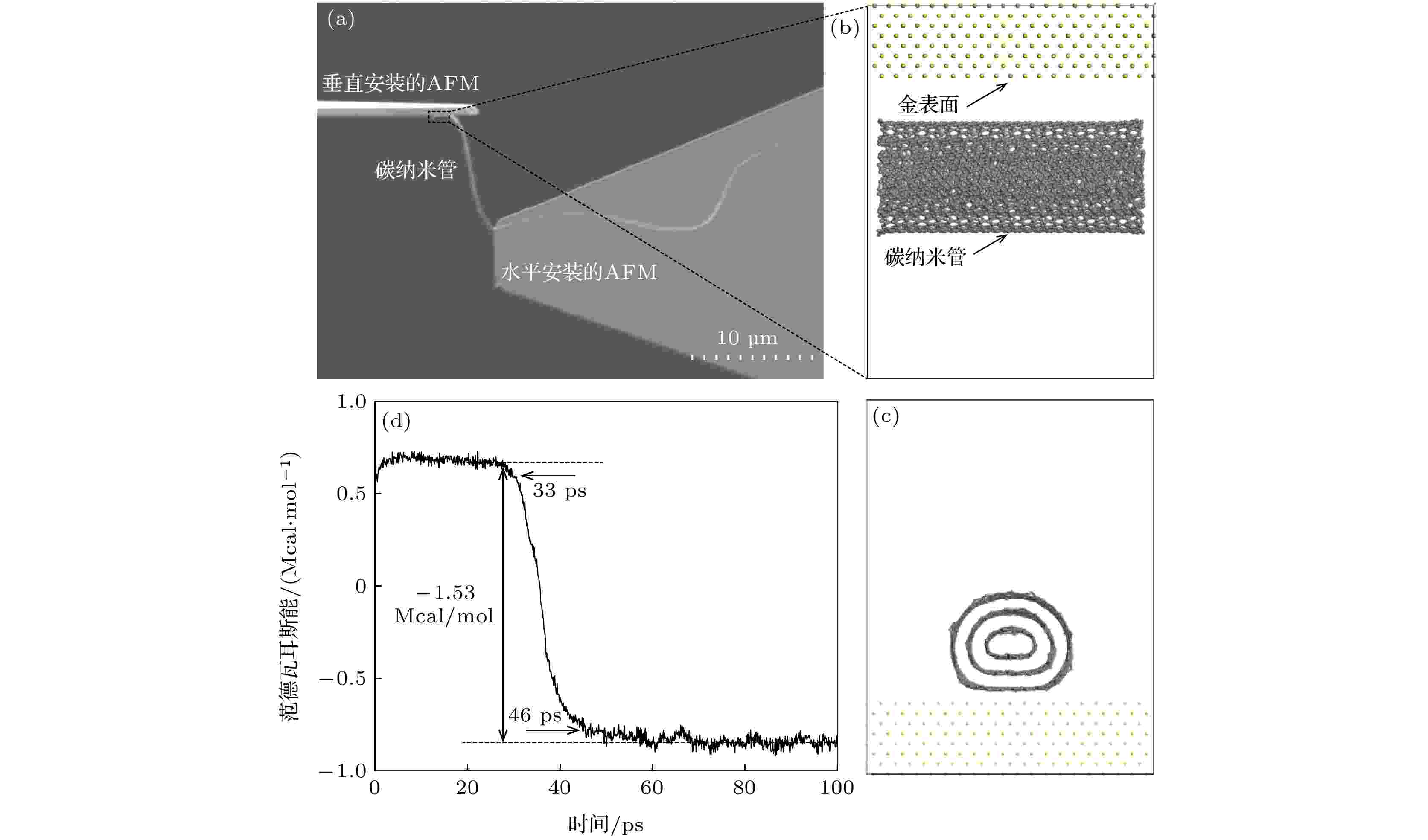
2021, 70 (10): 106101.
doi: 10.7498/aps.70.20202194
Abstract +
The interfacial contact configuration and contact intensity between carbon nanotube and metal surface play an important role in the electrical performance of carbon nanotube field effect transistors and nanoscale carbon nanotube robotic manipulation. In this paper, we investigate numerically the contact configuration and the contact intensity between multiwall carbon nanotube with open ends or capped ends and various metal surfaces in carbon nanotube field effect transistor assembly by the molecular dynamics simulation. The simulation results show that the change in the position and shape of multiwall carbon nanotube on the metal surface are mainly due to the decrease of van der Waals energy reduction: the decrement of van der Waals energy is converted into the internal energy and kinetic energy of carbon nanotubes. Moreover, the binding energy between multiwall carbon nanotube and metal surface is negative, which indicates that multiwall carbon nanotube adheres to the metal surface. In addition, the contact intensity of multiwall carbon nanotube in horizontally contacting metal surface is influenced by initial distance, contact length and metal materials. The final equilibrium distance is around ~0.3 nm when the initial distance is less than ~1 nm. And the contact intensity increases with the augment of contact length between carbon nanotube and metal. The contact intensity between platinum and carbon nanotube is larger than that between tungsten and aluminum, therefore, platinum-coated probe is generally utilized for picking carbon nanotube up. The contact intensity of the carbon nanotubes with the open ends and closed ends in the vertical contact with the metal surface are both lower than those in the horizontal contact. The interfacial contact configuration of carbon nanotube and metal materials mainly include the displacement and geometric deformation of carbon nanotube. The displacement and geometric deformation of multiwall carbon nanotube with open ends on the metal surface finally result in its radial nanoscale ribbon structure. But the closed-end three-wall carbon nanotube has the small axial geometric deformation through comparing the concentration profiles between the initial carbon nanotube and the collapsed carbon nanotube. In a carbon nanotube field effect transistor, the collapsed multiwall carbon nanotube forms the ribbon structure like a single wall carbon nanotube. And the distance between carbon nanotube walls and between the outermost carbon nanotube wall and the metal electrode are both about ~0.34 nm. The atomic scale spacing ensures that electrons tunnel from the metal to the outermost carbon nanotube wall and migrate radially between the inner carbon nanotube walls.
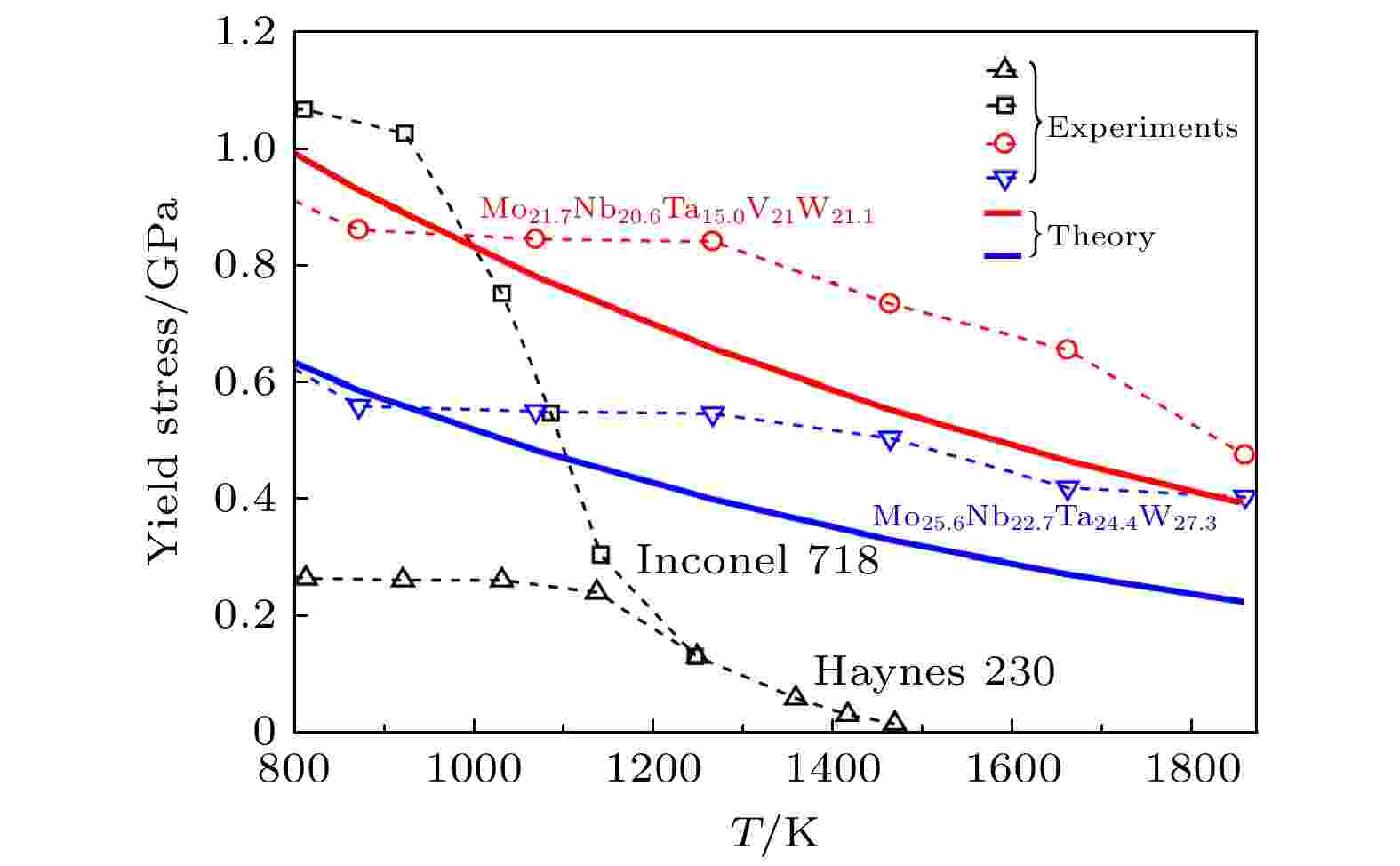
2021, 70 (10): 106201.
doi: 10.7498/aps.70.20201986
Abstract +
As a new type of multi-principal component solid solution alloy, high-entropy alloy has the four major effects, i.e. high entropy, lattice distortion, slow diffusion, and “cocktail” in orderly arrangement of atoms and chemical disorder. It exhibits excellent comprehensive performances and is expected to be used as a new type of high-temperature structural material, wear-resistant material, and radiation-resistant material, which is used in the areas of aerospace, mining machinery, nuclear fusion reactors and others. In this paper, the present research status, conventional preparation methods, microstructures and phase compositions of tungsten high entropy alloys are mainly introduced. In view of the excellent comprehensive properties of high-entropy alloys, the mechanical properties, friction and wear resistance, and radiation resistance of tungsten high-entropy alloys are summarized, and the future research directions of tungsten high-entropy alloys are also prospected.

2021, 70 (10): 106801.
doi: 10.7498/aps.70.20201918
Abstract +
Liquid droplets impacting on the solid surface is an ubiquitous phenomenon in natural, agricultural, and industrial processes. The maximum spreading diameter of a liquid droplet impacting on a solid surface is a significant parameter in the industrial applications such as inkjet printing, spray coating, and spray cooling. However, former models cannot accurately predict the maximum spreading diameter on a superhydrophilic surface, especially under low Weber number (We). In this work, the spreading characteristics of a water droplet impacting on a superhydrophilic surface are explored by high-speed technique. The spherical cap of the spreading droplet, gravitational potential energy, and auxiliary dissipation are introduced into the modified theoretical model based on the energy balance. The model includes two viscous dissipation terms: the viscous dissipation of the initial kinetic energy and the auxiliary dissipation in spontaneous spreading. The energy component analysis in the spreading process shows that the kinetic energy, surface energy, and gravitational potential energy are all transformed into the viscous dissipation on the superhydrophilic surface. The transformation of surface energy into viscous dissipation is dominant at lower We while the transformation of kinetic energy into viscous dissipation is dominant at higher We. It is found that the gravitational potential energy and auxiliary dissipation play a significant role in spreading performance at low We according to the energy component analysis. Moreover, the energy components predicted by the modified model accord well with the experimental data. As a result, the proposed model can predict the maximum spreading diameter of a droplet impacting on the superhydrophilic surface accurately. Furthermore, the model proposed in this work can predict the maximum spreading diameter of the droplet impacting on the hydrophilic surface and hydrophobic surface. The results of this work are of great significance for controlling droplet spreading diameter in spray cooling and falling film evaporation.
CONDENSED MATTER: ELECTRONIC STRUCTURE, ELECTRICAL, MAGNETIC, AND OPTICAL PROPERTIES
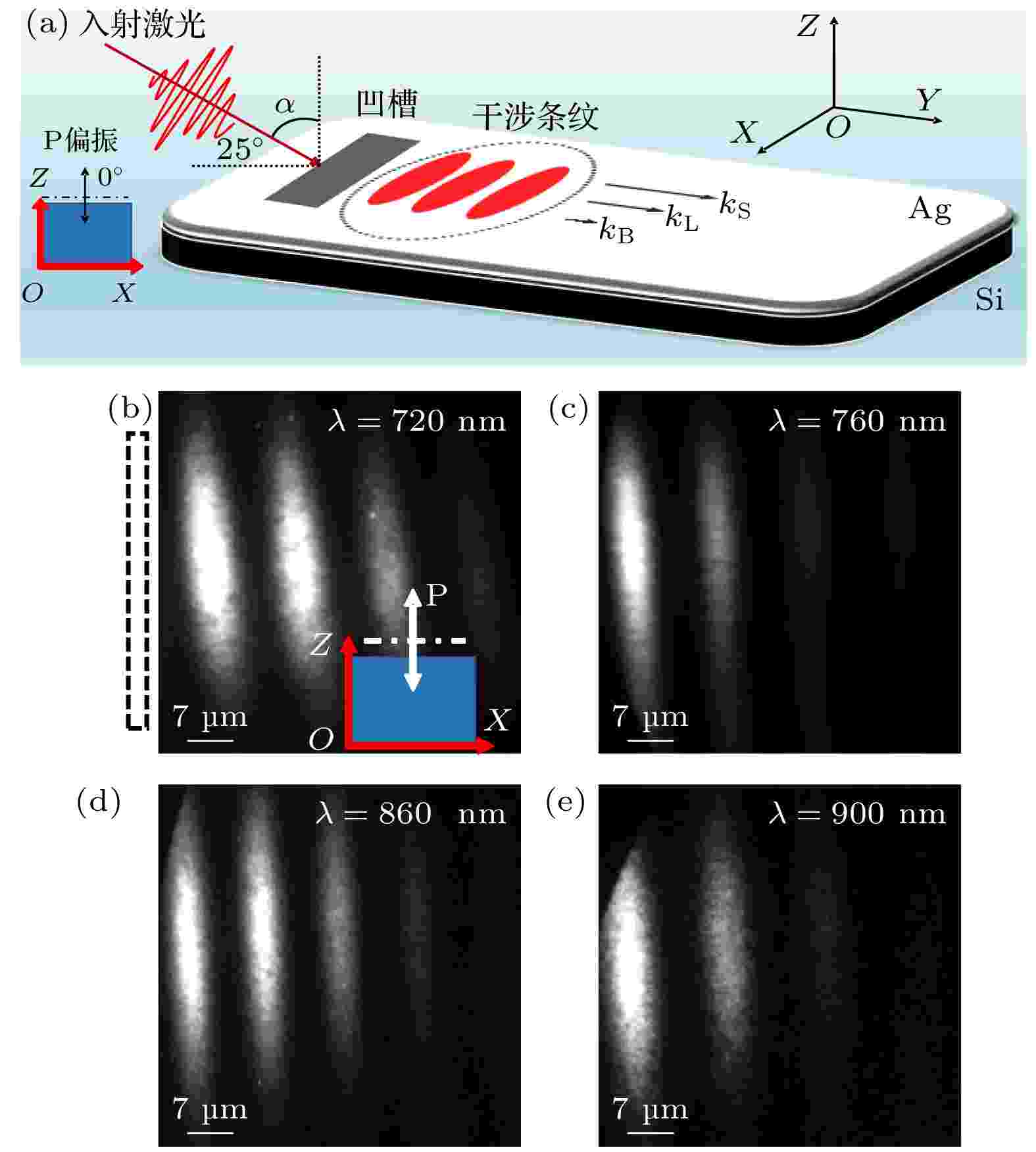
2021, 70 (10): 107101.
doi: 10.7498/aps.70.20201827
Abstract +
Near-field imaging and active control of excitation efficiency of femtosecond propagating surface plasmon (fs-PSP) are the prerequisites for its application. Here, we perform near-field imaging of fs-PSP excited at the trench etched on silver nano-film by using photoemission electron microscopy (PEEM). As an excellent near-field microscopy technique of in situ imaging with a high spatial resolution (< 20 nm), it needs neither molecular reporters nor scanning probes as required in nonlinear fluorescence microscopy in nonlinear fluorescence microscopy or scanning near-field optical microscopy, both of which may potentially bias PSP derived from such measurements. The period of the interference patterns induced by the incident femtosecond laser and the laser-induced fs-PSP and the wavelength of fs-PSP in a range of 720–900 nm of the incident laser wavelength are systematically measured. The fringe period of the interference pattern between fs-PSP and the incident laser is a range of 5.9–7.7 µm, and the wavelength of fs-PSP is in a range of 700–879 nm. The experimental results are consistent with the theoretical simulation results. Furthermore, we demonstrate that the excitation efficiency of fs-PSP can be actively controlled by adjusting the polarization direction of the incident laser in the femtosecond pump-probe experiments. Specifically, it is found that when the incident laser is polarized to 0° (p-polarization light), the excitation efficiency of PSP reaches a maximum value, and when the incident light is polarized to 90° (s-polarization light), the excitation efficiency of fs-PSP is the lowest. Unlike the simulation result by the finite difference time domain (FDTD) method, a plateau area of the intensity of the photoemission signal with the polarization direction of the incident laser appears in the femtosecond pump-probe experiment. This phenomenon is attributed to the background noise of the detection laser that masks the change of the fs-PSP excitation efficiency. In a word, this research realizes the experimental measurement of the basic parameters of fs-PSP and the manipulation of fs-PSP excitation efficiency by adjusting the polarization angle of the incident laser. This research lays a foundation for realizing the engineering manipulation of fs-PSP excitation efficiency and optimizing the performance of plasmonic devices.

2021, 70 (10): 107301.
doi: 10.7498/aps.70.20201988
Abstract +
Double electric layer capacitor is a kind of supercapacitor with high power density, but has relatively low energy density. Improving the quantum capacitances of materials will be a new way to increase their total interface capacitances. We design a two-dimensional electrode material with a high specific capacity and stable crystal structure. Due to the quantum confinement effect and the density of states, the quantum capacitances of two-dimensional materials such as graphene and silicene approach to zero when they are near the Fermi level. On the basis of the first principles of density functional theory, doping and adsorption can effectively modulate the electronic structure of two-dimensional electrode material such as graphene. It promotes the formation of the local state of the electrode material near the Dirac point and/or the movement of the Fermi level, thereby improving the quantum capacitance. Compared with the quantum capacitance of Ti (Au, Ag, Cu, Al), and 3-B (N, P, S) doped single-vacancy graphene (silicene, germanene), the quantum capacitance of 3-N doped single-vacancy graphene and of Ti atom adsorbed single-vacancy silicene/germanene are both significantly improved, and their quantum capacitances are as high as 118.42 μF/cm2, 79.84 μF/cm2, and 76.54 μF/cm2. The concentration effects of 3N-doped three kinds of alkenes are studied, and the results show that the quantum capacitance is enhanced with the doping concentration increasing. It is also found by studying the thermodynamic stability of the doped systems that Ti is the most stable adsorbed atom because of the strong bond between Ti atom and C atom. The S is the most stable doping atom in B, N, P, S doped single-vacancy silicene and germanene. For graphene, N doping has the lowest formation energy and the best quantum capacitance. This study intends to clarify the controversy regarding the energy storage enhancement of two-dimensional double-layer supercapacitor materials, and to improve the quantum capacitance. The research results provide the guidance for understanding the quantum effects caused by optimizing the structure of two-dimensional electrode material. The above theoretical calculation of the mentioned two-dimensional electrode material provides some research ideas for improving the low energy density of electric double-layer supercapacitors.
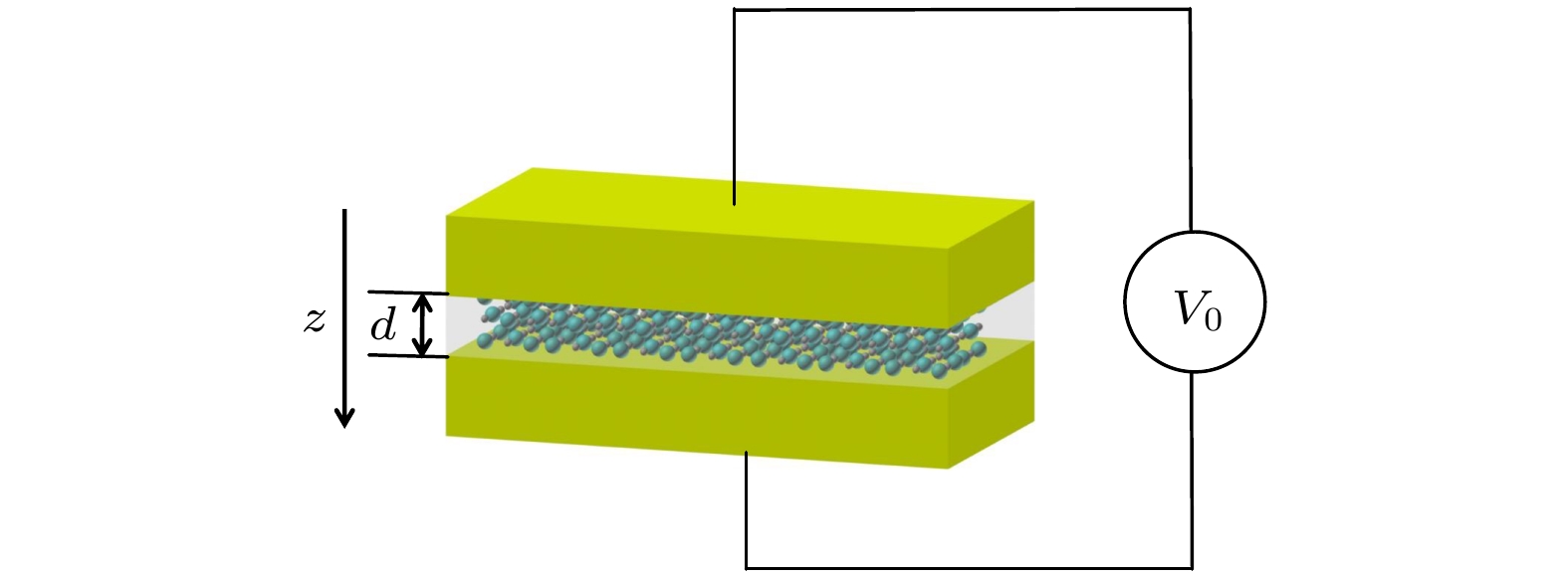
2021, 70 (10): 107302.
doi: 10.7498/aps.70.20201905
Abstract +
MgO-based magnetic tunnel junction is a hot issue in the field of spin electronic devices, and its temperature and bias voltage play quite an important role in practical applications. Therefore, it is desiderated to obtain the temperature-bias phase diagram of MgO-based magnetic tunnel junction. This paper develops a theory which is suitable for magnetic tunnel junctions with single crystal barrier. In this theory, the single crystal barrier is regarded as a periodic grating, and the tunneling process is treated by optical diffraction theory, so the coherence of the tunneling electron can be well taken into account. Most importantly, the theory can handle both the temperature effect and bias effect of MgO-based magnetic tunnel junctions. According to the present theory, the temperature-bias phase diagram of MgO-based magnetic tunnel junctions is calculated under different half the exchange splittings, chemical potentials and periodic potentials. The theoretical results show that the extreme phase point of tunneling magnetoresistance (TMR) can move to high temperature region through regulating half the exchange splitting Δ of ferromagnetic electrode of MgO-based magnetic tunnel junction. This will be beneficial to the applications of magnetic tunnel junctions at room temperature. Moreover, the chemical potential μ can change the bias corresponding to the maximum phase point of TMR. As is well known, the chemical potential will vary with the material of ferromagnetic electrode. Therefore, if the material of ferromagnetic electrode is chosen with a proper chemical potential, we can obtain a large TMR under high bias voltage. In other words, the output voltage can be considerably increased. This will be favorable for the preparation of high power devices. In addition, it is found that the phase diagram of TMR is significantly dependent on periodic potential v( K h). As a result, the effects of temperature and bias voltage in the MgO-based magnetic tunnel junctions can be optimized by regulating half the exchange splitting Δ, chemical potential μ, and periodic potential v( K h). The present work provides a solid theoretical foundation for the applications of MgO-based magnetic tunnel junctions.
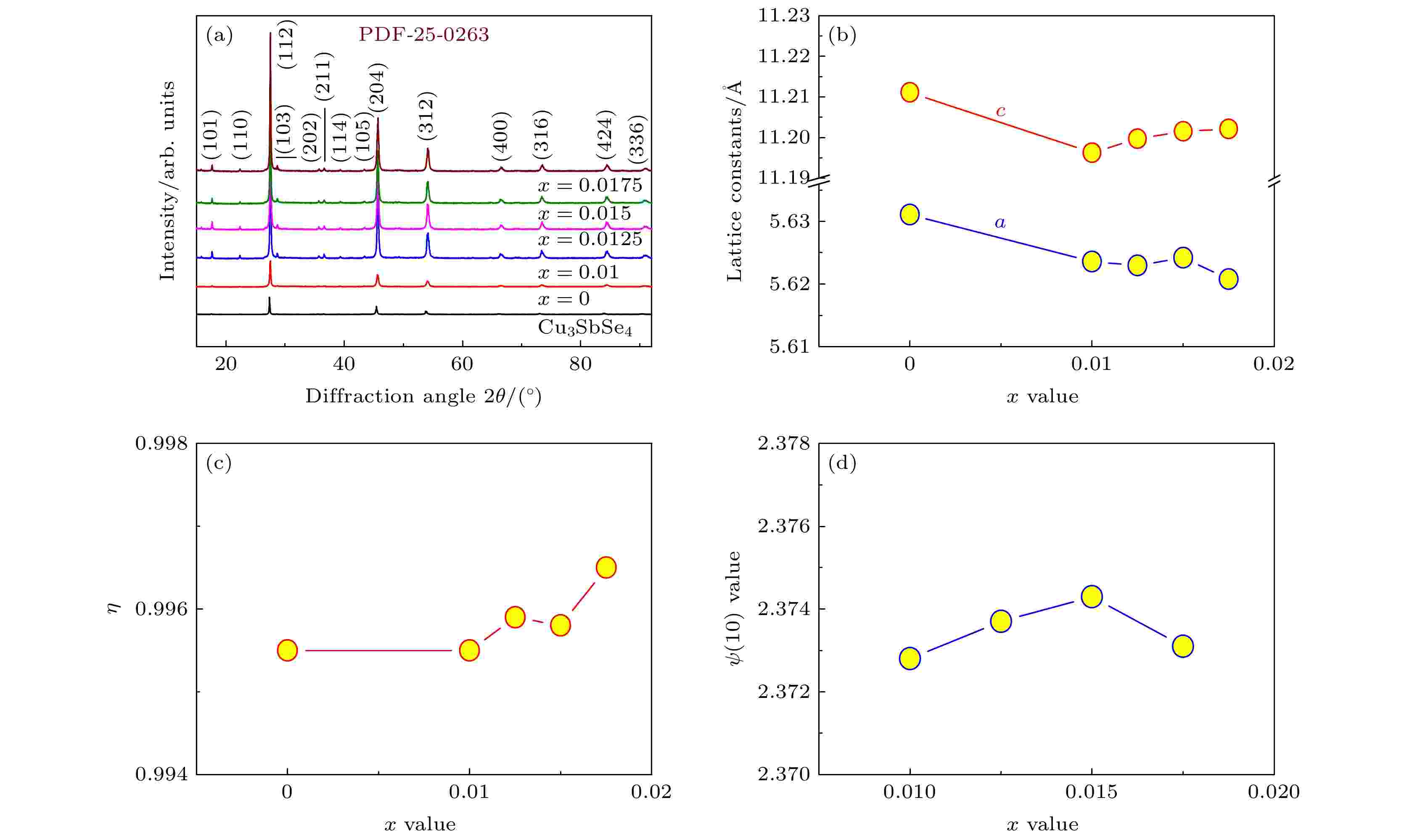
2021, 70 (10): 107303.
doi: 10.7498/aps.70.20202094
Abstract +
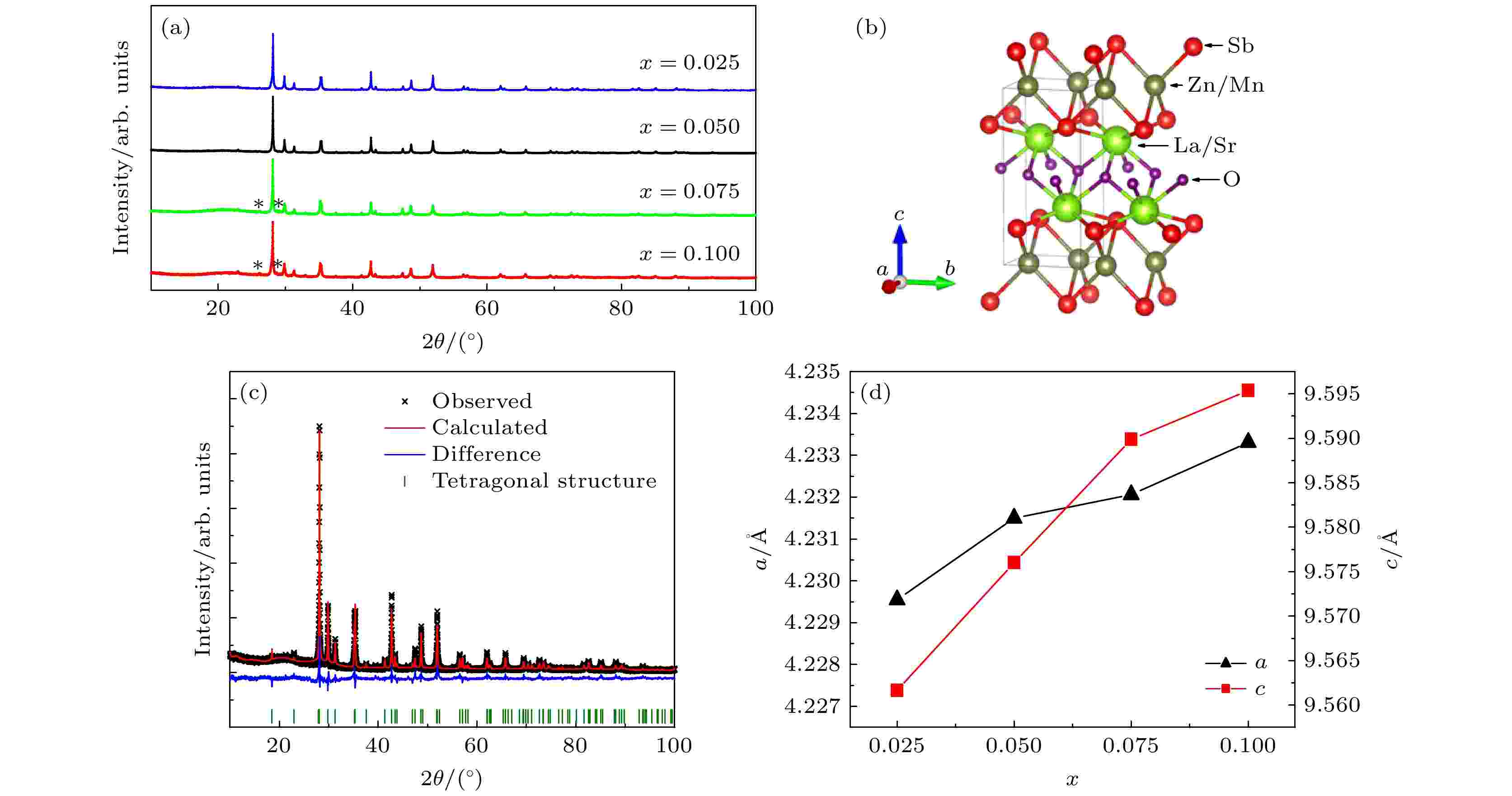
EDITOR'S SUGGESTION
2021, 70 (10): 107501.
doi: 10.7498/aps.70.20201966
Abstract +
Diluted magnetic semiconductor (DMS) that combines the properties of spin and charge degrees of freedom, which has potential applications in the field of spintronic devices. In the 1990s, due to the breakthrough of low-temperature molecular beam epitaxy technology, scientists successfully synthesized III-V DMS (Ga, Mn)As, and developed some spintronics devices accordingly. However, the maximum Curie temperature of (Ga, Mn)As is only 200 K, which is still below room temperature that is required for practical applications. Searching for diluted magnetic semiconductors with higher Curie temperature and the exploring of their magnetism is still one of the focuses at present. In recent years, developed from iron-based superconductors, a series of novel magnetic semiconductors have been reported. These new DMSs have the advantages of decoupled charge and spin doping, and each concentration can be precisely controlled. In this paper, novel bulk diluted magnetic semiconductors (La1–xSrx)(Zn1–xMnx)SbO (x = 0.025, 0.050,0.075, 0.10) are successfully synthesized, with the highest Tc ~ 27.1 K for the doping level of x = 0.10. We dope Sr2+ and Mn2+ into the parent semiconductor material LaZnSbO to introduce holes and moments, respectively. The ferromagnetic ordered phase transition can be observed in the samples with various doping concentrations. A relatively large coercive field is observed to be ~ 5000 Oe from the iso-thermal magnetization measurement at 2 K. The (La1–xSrx)(Zn1–xMnx)SbO has the same crystal structure as the “1111-type” iron-based superconductor LaFeAsO, and the lattice parameter difference is very small. It provides a possible material choice for preparing the multifunctional heterojunction devices.
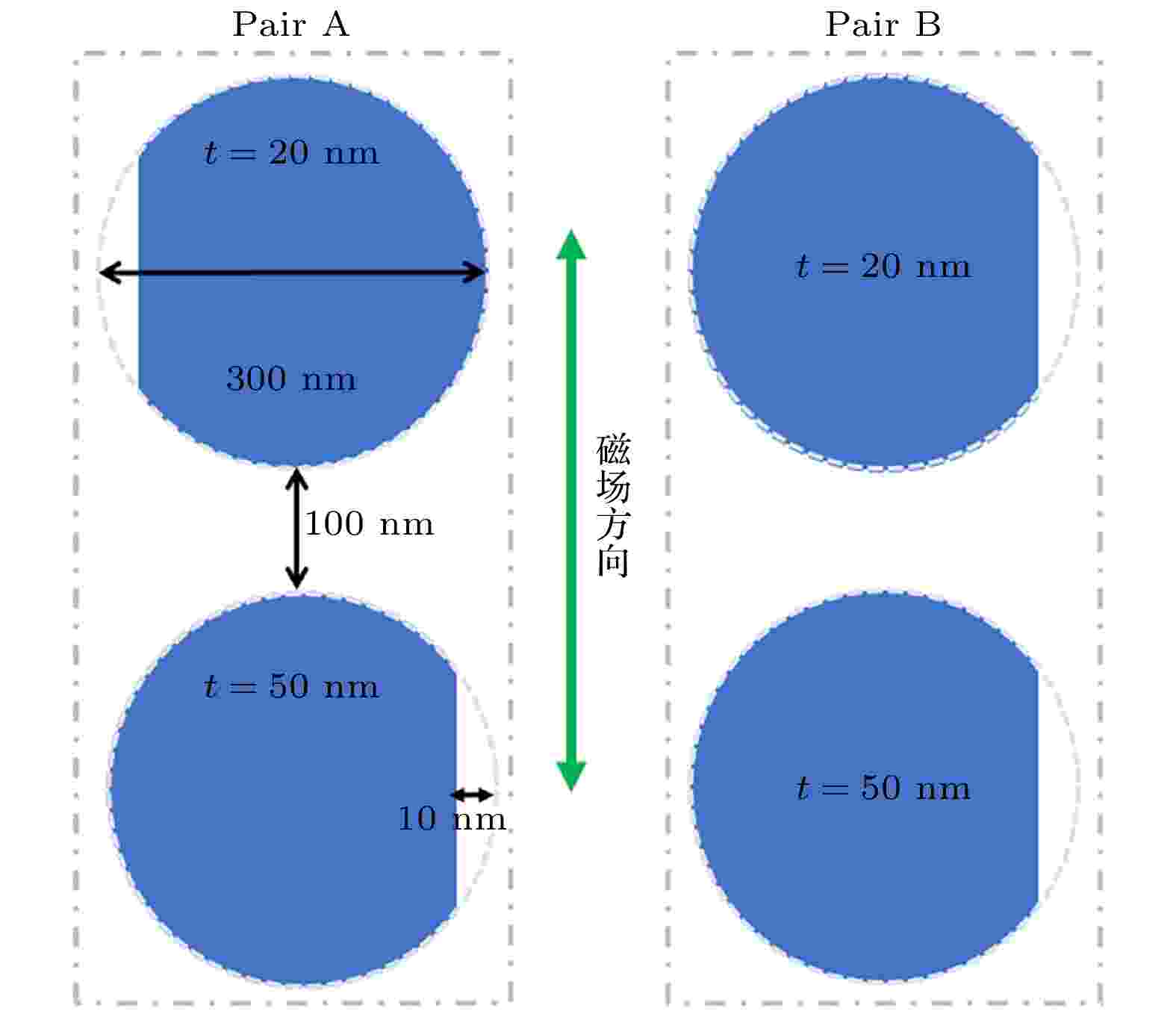
2021, 70 (10): 107502.
doi: 10.7498/aps.70.20201995
Abstract +
In a nanodisk made of soft ferromagnet, the magnetic vortex structure are highly stabilized, and the circulation directions of the vortices are naturally binary (either clockwise (CW) or counter-clockwise (CCW)), which can be associated with one bit of information, and thus the magnetic vortices have been of great interest recently. A vortex-circulation-based memory requires the perfect controllability of the circulation direction. From the circulation point of view, there are four possible ground states in a nanodisk pair: (CCW, CCW), (CCW, CW), (CW, CCW) and (CW, CW). In a perfect circular nanodisk, CW and CCW states are degenerate because of the high symmetry of the system. However, the circulation of the magnetic vortex is known to be controlled by introducing the asymmetry. It has been reported that the magnetic vortices with opposite (the same) circulations are realized in one-side-flat disk pair. That means in one-side-flat nanodisk pair only the control of two of these four ground states is possible, eg., (CCW, CW), (CW, CCW) or (CCW, CCW), (CW, CW). We found that the reversal of the magnetic vortex circulation is affected by the nanodisk thickness as well. By further introducing another asymmetry, different thickness, the control of the four circulation ground states is achieved in a nanodisk pair. In this work, the controllability of the four ground states in a nanodisk pair was numerically investigated via micromagnetic simulations. The results show that in a single one-side-flat nanodisk, there exists a preferred rotational sense at the remanent state after the nanodisk is saturated by the external magnetic field, applied parallel to the flat edge of the nanodisk. The shape anisotropy is the primary cause of this phenomenon. We further found that the obtained rotational senses of the magnetization in the vortex state in nanodisks with the same geometrical parameters but different thickness (20 nm and 50 nm) are opposite for the same direction of the externally applied field. This is attributed to the competition between the demagnetization field energy and the exchange energy during the vortex formation. The method we proposed provides a simple means of controlling the vortex state that can thus become a useful tool for designing vortex-based devices.
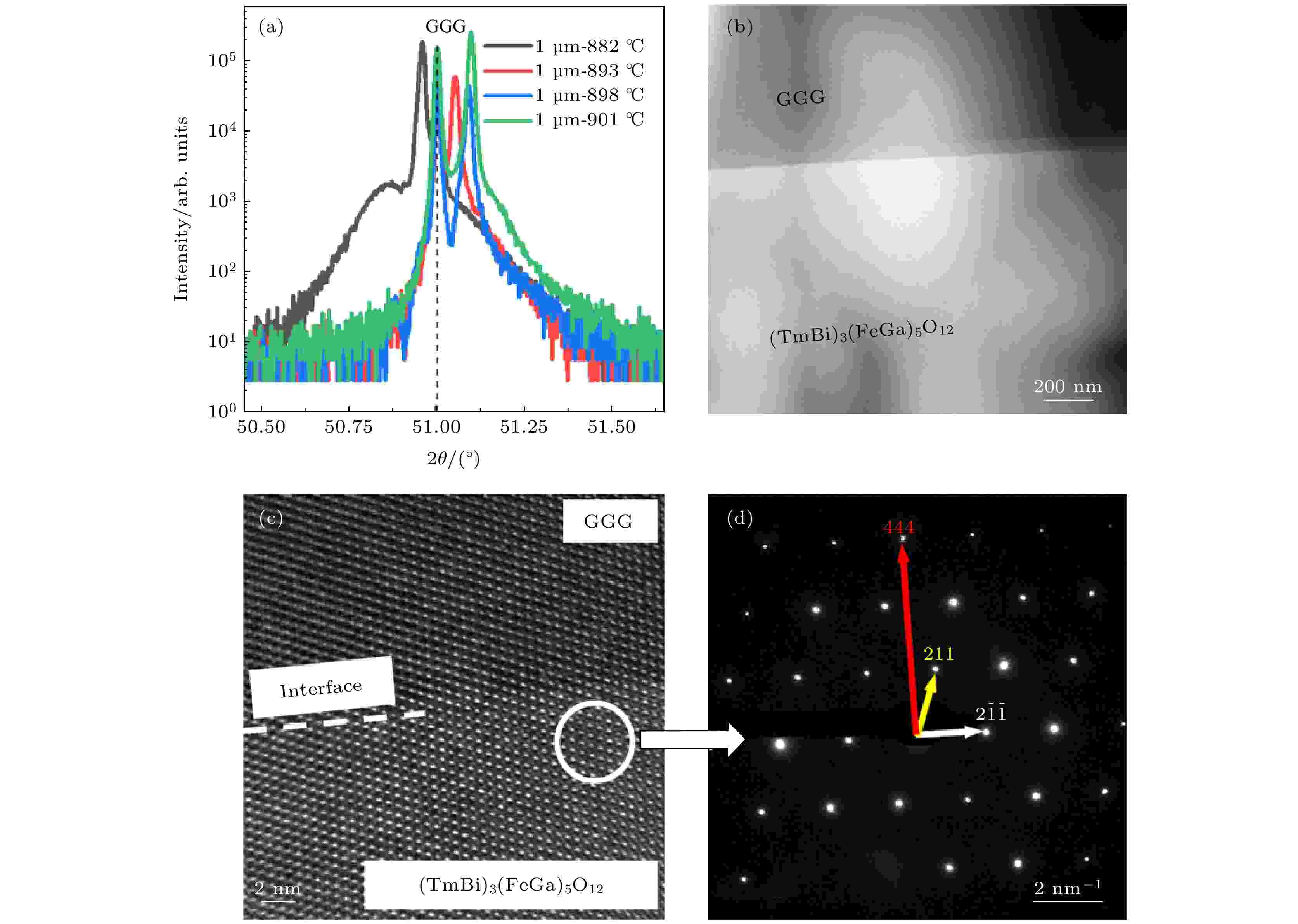
EDITOR'S SUGGESTION
2021, 70 (10): 107801.
doi: 10.7498/aps.70.20202209
Abstract +
Liquid-phase epitaxy (LPE) is one of the best techniques for the preparation of single crystal garnet films. However, the specific Faraday rotation angle of Yttrium iron garnet (YIG) is small, and its easy magnetization axis is parallel to the film surface. The YIG requires a large external saturation field, which cannot meet the development needs of magneto-optical devices. It is found that Bi-substituted YIG(Bi:YIG) film has a larger specific Faraday angle. By adjusting the easy magnetization axis of Bi: YIG perpendicular to the film surface, the saturation magnetization of Bi: YIG can be reduced, so that it can work under a small external magnetic field. This meets the development needs of miniaturization and energy saving of magneto-optical device. The saturation magnetization of garnet film can be effectively reduced by substituting Ga3+ for YIG crystal, mainly for Fe3+ at the 24d position of its tetrahedron. And the lattice constants of Gd3Ga5O12 (GGG) and YIG are 1.2383 nm and 1.2376 nm, respectively. However, the radius of Bi3+ (10.8 nm) is larger than that of Y3+ (9.0 nm), the lattice mismatch of garnet film increases with the incorporation of Bi3+. In order to neutralize the lattice expansion caused by Bi3+, Tm3+ (8.69 nm) with a radius smaller than that of Y3+ (9.0 nm) is selected. Based on the theoretical analysis of the magnetocrystalline anisotropy of garnet film, (BiTm)3(GaFe)5O12 mono-crystalline films with different growth temperatures and different thickness values are grown by LPE on GGG (111) substrates. The experimental results show that when the thickness of epitaxial film is greater than 1 μm, the influence of shape anisotropy on magnetocrystalline anisotropy can be ignored. With the increase of growth temperature, the substitution number of Bi3+ ions decreases gradually, the lattice constant of epitaxial film decreases gradually, and the lattice mismatch first decreases and then increases. Then, the state of compressive stress gradually changes into that of tensile stress. Compared with growth-induced anisotropy, the stress-induced anisotropy is dominant in the change of magnetocrystalline anisotropy. The Verdet constant of (BiTm)3(GaFe)5O12 film is 11.8 × 104 rad/Tm@1064 nm. The results show that the prepared (BiTm)3(GaFe)5O12 mono-crystalline films have great development potential in magneto-optical devices.
INTERDISCIPLINARY PHYSICS AND RELATED AREAS OF SCIENCE AND TECHNOLOGY

2021, 70 (10): 108401.
doi: 10.7498/aps.70.20201674
Abstract +
With the development of modern communication technology, unlimited energy harvesting technology has become more and more popular. Among them, the weak energy density wireless energy harvesting technology has broken through the limitations in traditional transmission lines and can use the “waste” energy in the environment, which has become very popular. The Schottky diode is the core device of the 2.45 G weak energy density wireless energy harvesting system, and its performance determines the upper limit of the system's rectification efficiency. From the material design point of view, using crystal orientation optimization technology and Sn alloying technology, we propose and design a Ge-based compound semiconductor with large effective mass, large affinity, and high electron mobility. On this basis, the device simulation tool is further used to set reasonable device material physical parameters and geometric structure parameters, and a Ge-based Schottky diode for 2.45 G weak energy microwave wireless energy transmission is realized. The simulation of the ADS rectifier circuit based on the SPICE model of the device shows that comparing with the conventional Schottky diode, the turn-on voltage of the device is reduced by about 0.1 V, the zero-bias capacitance is reduced by 6 fF, and the reverse saturation current is also significantly increased. At the same time, the designed new Ge-based Schottky diode is used as the core rectifier device to simulate the rectifier circuit. The results show that the new-style Ge-based Schottky diode is in the weak energy working area with input energy in a range of –10 — –20 dBm. The energy conversion efficiency is increased by about 10%. The technical solutions and relevant conclusions of this article can provide a useful reference for solving the problem of low rectification efficiency of the 2.45 G weak energy density wireless energy harvesting system.

EDITOR'S SUGGESTION
2021, 70 (10): 108402.
doi: 10.7498/aps.70.20201826
Abstract +
Thermoelectric refrigeration technology is an environment-friendly refrigeration technology with broad application prospects. The Peltier effect plays a central role in the thermoelectric refrigeration process, however, the Peltier coefficient is difficult to measure. So in the actual application process, first, the Seebeck coefficient is usually obtained, and then the Peltier coefficient is achieved by the Kelvin's second relation indirectly. It should be noted that the Kelvin's second relation is obtained under linear conditions (Ohm's law, Fourier's law, etc.), while in practice, nonlinear current-voltage relationships (Schottky junction, pn junction, etc.) and nonlinear heat transport relations are common. And quantum effect plays a leading role in the nano-scaled region, then the Peltier effect must consider the influence of nonlinearity, and the applicability of the Kelvin's second relation must also be reconsidered. This paper first summarizes the theoretical derivation of Peltier coefficient and the Kelvin’s second relation by different methods, then discusses the hypothetical conditions used in the derivation process, and points out that the Kelvin’s second relation can be established only under the hypothetical linear conditions. Then, several experimental methods of determining the Peltier coefficient are summarized. It is found that there are still many problems encountered in the measurement of Peltier coefficient, and the Kelvin’s second relation has not been proved accurately by practical experiments. Various side effects (Fourier effect, Thomson effect, Joule effect and Seebeck effect) in the measurement process affect the temperature distribution of the system directly or indirectly, making it difficult to measure Peltier heat. After that, the theoretical work of nonlinear Peltier effect is briefly introduced. In the process of thermal transport and electrical transport on a microscopic scale, quantum effect plays a leading role, and the nonlinear part of the Peltier coefficient gradually emerges. These studies show the cognition of researchers that the Peltier effect gradually changes from linear to nonlinear. The nonlinear Peltier effect not only exists objectively, but also is very important in the practical applications. However, the current research on the nonlinear Peltier effect is still at the theoretical level, and there is almost no experimental work. Finally, we discuss the research strategy and feasible research direction of Peltier effect under nonlinear conditions. An integrated study of the relationship among various heterojunction band structures, interface properties and interface effects is helpful in comprehensively understanding the Peltier effect. With the continuous improvement of experimental conditions and theoretical research, the study of nonlinear Peltier effect is expected to realize a new breakthrough.
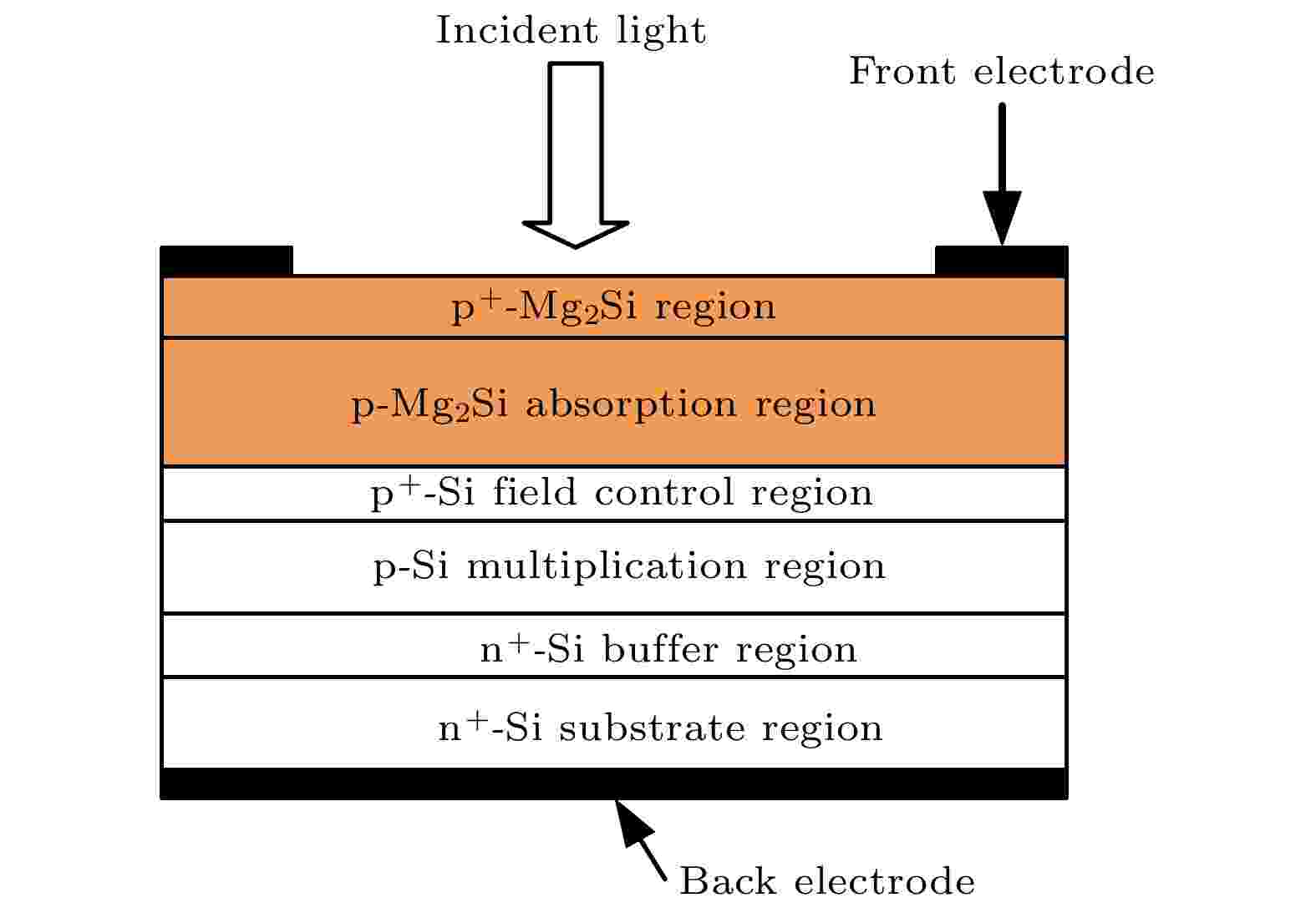
2021, 70 (10): 108501.
doi: 10.7498/aps.70.20201923
Abstract +
InGaAs and HgCdTe materials are widely used in short wave infrared photodetectors, which contain heavy metal elements. The massive use of the heavy metal elements naturally results in their scarcity, and the nonnegligible environmental pollution. Searching for other suitable materials for infrared devices becomes a key to solving the above problems. As a kind of abundant and eco-friendly material, Mg2Si has a high absorption coefficient in the near-infrared band. Its application in infrared detector makes it possible to replace the infrared devices containing toxic elements on the market in the future. The Mg2Si/Si avalanche photodiode(APD) with separation structure of absorption layer, charge layer and multiplication layer, with Mg2Si serving as the absorption layer, is constructed by using the Atlas module in Silvaco software. The effects of the thickness and doping concentration of the charge layer and multiplier layer on the distribution of internal electric field, punch-through voltage, breakdown voltage (Vb), C-V characteristics, and transient response of Mg2Si/Si SACM-APD are simulated. The effects of bias voltage on the I-V characteristics and spectral response are analyzed. The punch-through voltage, breakdown voltage, dark current density, gain coefficient (Mn) and the current amplification factor (M) after avalanche effect of APD are obtained after the structure optimization. According to the simulation results, the spectral response wavelength of the device is extended to 1.6 μm, so the selection of Mg2Si as the absorption layer effectively extends the spectral response band of Si based APD. When the wavelength of incident light is 1.31 µm and the optical power is 10 mW/cm2, the obtained punch-through voltage is 17.5 V, and the breakdown voltage is 50 V. When the bias voltage is 47.5 V (0.95Vb), the peak value of spectral response is 25 A/W at a wavelength of 1.1 μm, a density of dark current is about 3.6 × 10–5 A/cm2, a multiplication factor Mn is 19.6, and Mn achieves a maximum value of 102 when the device is broken down. Meanwhile, the current amplification factor M after avalanche effect is 75.4, and the current gain effect of the SACM structure is obvious. The peak value of spectral response for the pin-type photodiode in the previous study is only 0.742 A/W. Comparing with the pin-type photodiode, the spectral response of Mg2Si/Si SACM-APD is greatly improved. In this work, the structure parameters of the device are optimized, which lays a nice foundation for fabricating the high-performance devices.
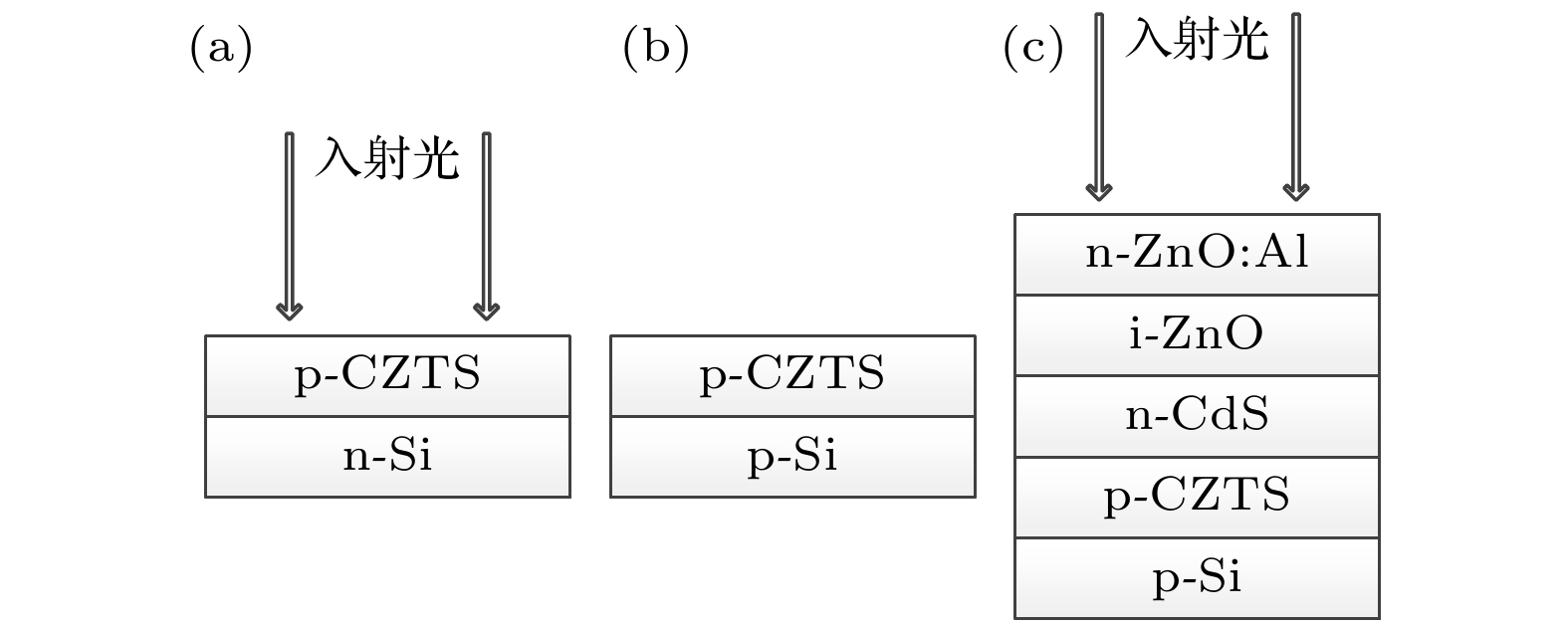
2021, 70 (10): 108801.
doi: 10.7498/aps.70.20201936
Abstract +
The Cu2ZnSnS4 (CZTS) solar cell prepared on Si substrate has an advantage of low lattice mismatch between CZTS and Si substrate, but the conversion efficiency of reported p-CZTS/n-Si solar cells is still low at present. In this work, the CZTS solar cells on Si substrate are calculated numerically by heterojunction solar cell simulation software Afors-het. The calculated results show that the p-CZTS and n-Si act as window layer and absorber respectively in the p-CZTS/n-Si solar cell because the band gap of p-CZTS is larger than that of n-Si. The conversion efficiency of p-CZTS/n-Si solar cell increases as the thickness of p-CZTS window layer decreases. The highest calculated conversion efficiency of p-CZTS/n-Si solar cell is 18.57%. In the best p-CZTS/n-Si solar cell, most of the incident light cannot pass through the p-CZTS window layer due to the high absorption coefficient of p-CZTS, which limits the conversion efficiency of solar cell. In order to solve the problems existing in the p-CZTS/n-Si structure, a novel n-ZnO:Al/i-ZnO/n-CdS/p-CZTS/p-Si solar cell structure is proposed, where n-ZnO:Al and i-ZnO are window layers, n-CdS is buffer layer, p-CZTS is absorber, and p-Si is substrate and back electrode. The dark current density-voltage (J-V) characteristic curves of p-CZTS/p-Si structure varying with the thickness and doping concentration of p-Si and the doping concentration of p-CZTS are calculated to investigate the feasibility of p-Si as a back electrode of p-CZTS. All the calculated J-V characteristic curves of p-CZTS/p-Si structure are linear, indicating the formation of ohmic contact between p-CZTS and p-Si. The photovoltaic properties of n-ZnO:Al/i-ZnO/n-CdS/p-CZTS/p-Si solar cell are further calculated. The built-in electric field distributed in n-ZnO:Al, i-ZnO, n-CdS, and p-CZTS contribute to the collection of photo-generated carriers. The conversion efficiency of n-ZnO:Al/i-ZnO/n-CdS/p-CZTS/p-Si solar cell is enhanced with the decrease of the thickness of p-Si and the increase of doping concentrations of p-Si and p-CZTS and the thickness of p-CZTS. Without considering the effect of parasitic series resistance and parallel resistance and defect states, the highest conversion efficiency of ideal n-ZnO:Al/i-ZnO/n-CdS/p-CZTS/p-Si solar cell is 28.41%. The calculated results in this work show that the n-ZnO:Al/i-ZnO/n-CdS/p-CZTS/p-Si solar cell has an appropriate structure for CZTS solar cell on Si substrate.
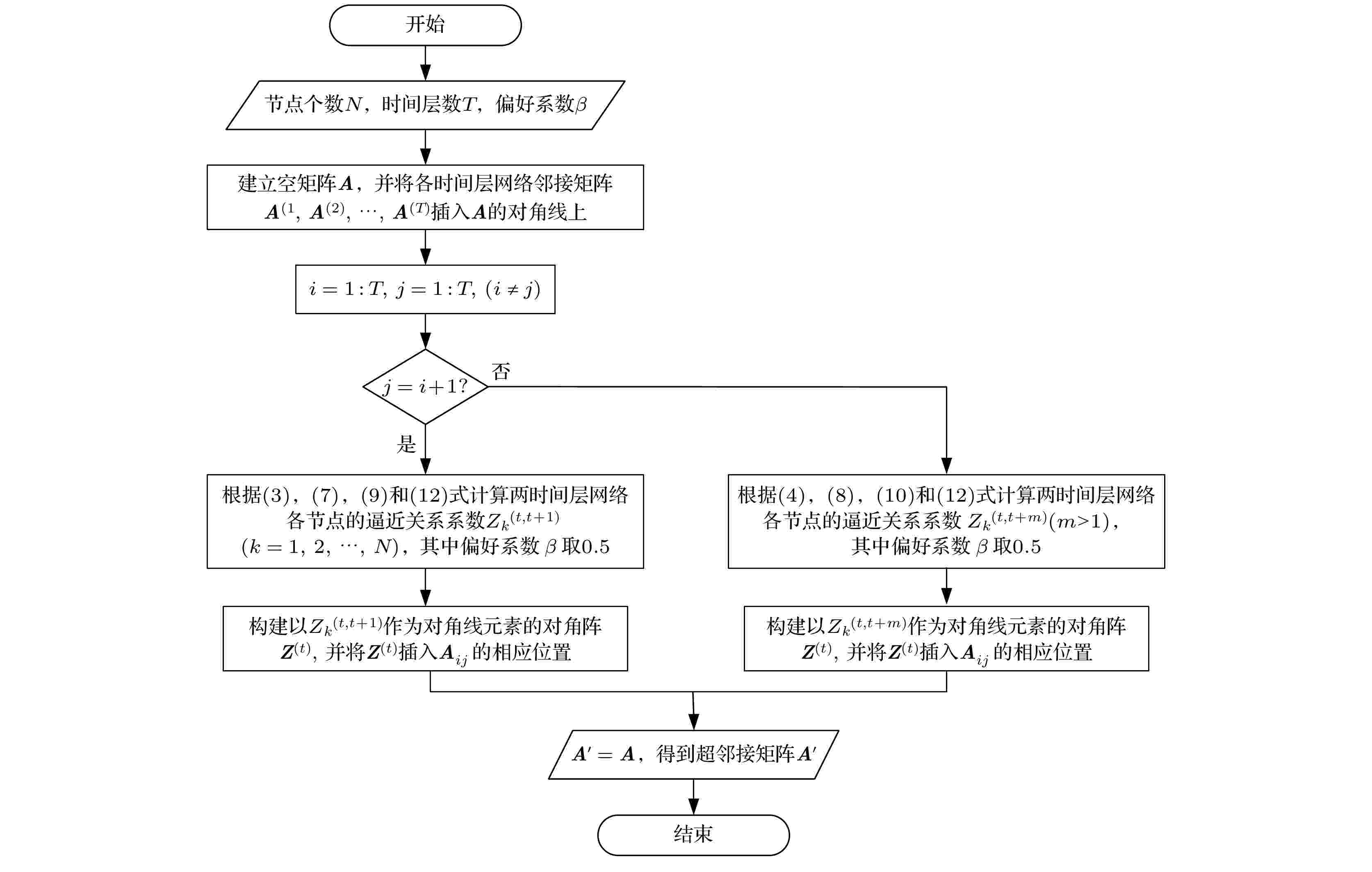
2021, 70 (10): 108901.
doi: 10.7498/aps.70.20201804
Abstract +
The identification of important nodes can not only improve the research about the structure and function of the network, but also encourage people to widely promote the application fields such as in infectious disease prevention, power grid fault detection, information dissemination control, etc. Currently, numerous conclusions have been proved on the identification of important nodes based on the static-network, which may lead the general property to be weakened as resistivity and conductivity experience the dynamic evolution of the relationship between network nodes with time. Temporal network analysis can more accurately describe the change of interaction order and interaction relationship of network nodes in the process of spatio-temporal evolution, and establish an appropriate temporal network model, as well as provide scientific theoretical support for the identification of important nodes. In this paper, we pay attention to considering the intensity of adjacent and cross-layer coupling, and propose a super-adjacency matrix (ISAM) method based on inter-layer isomorphism rate to represent the temporal networks and measure the importance of nodes. And at the same time, it is given that the temporal network G has N nodes and T time layers, and the ISAM is a super adjacency matrix composed of intra-layer and inter-layer relationships of adjacent and cross-layer networks, and its size is NT × NT. We focus on the study of the coupling between adjacent and cross-layer networks. The traditional method (SAM) considers the isomorphism rate of adjacent layers as a constant. In the improved method (SSAM), the connection between layers is described by a neighbor topological overlap coefficient. In this paper, the concept of the compatible similarity between cross-layer networks is given first, and then, by combining the projection value of vectors in n-dimensional real space and the contribution value of node neighbors, the inter-layer approximation relation coefficient of temporal network is inferred and analyzed. Generally speaking, it ensures the difference in coupling degree among different nodes in the inter-layer relationship. We calculate the importance of nodes based on eigenvector centrality in temporal network, which presents the importance of node i progressing with time. Simultaneously, the robustness of temporal network is studied by making use of the difference in temporal global efficiency. In the end, the operator of Kendall correlation coefficient is used to evaluate the node ranking effect of different time layers between the eigenvector-based centrality and the difference of temporal global efficiency. According to the experimental results of ISAM, SSAM and SAM on Workspace and Email-eu-core data sets, the average Kendall τ of both ISAM methods considering adjacent and cross-layer network isomorphism rate can be increased by 8.37% and 2.99% respectively. The conclusions show that the measurement method of temporal network inter-layer isomorphism rate is reliable and effective.
GEOPHYSICS, ASTRONOMY, AND ASTROPHYSICS
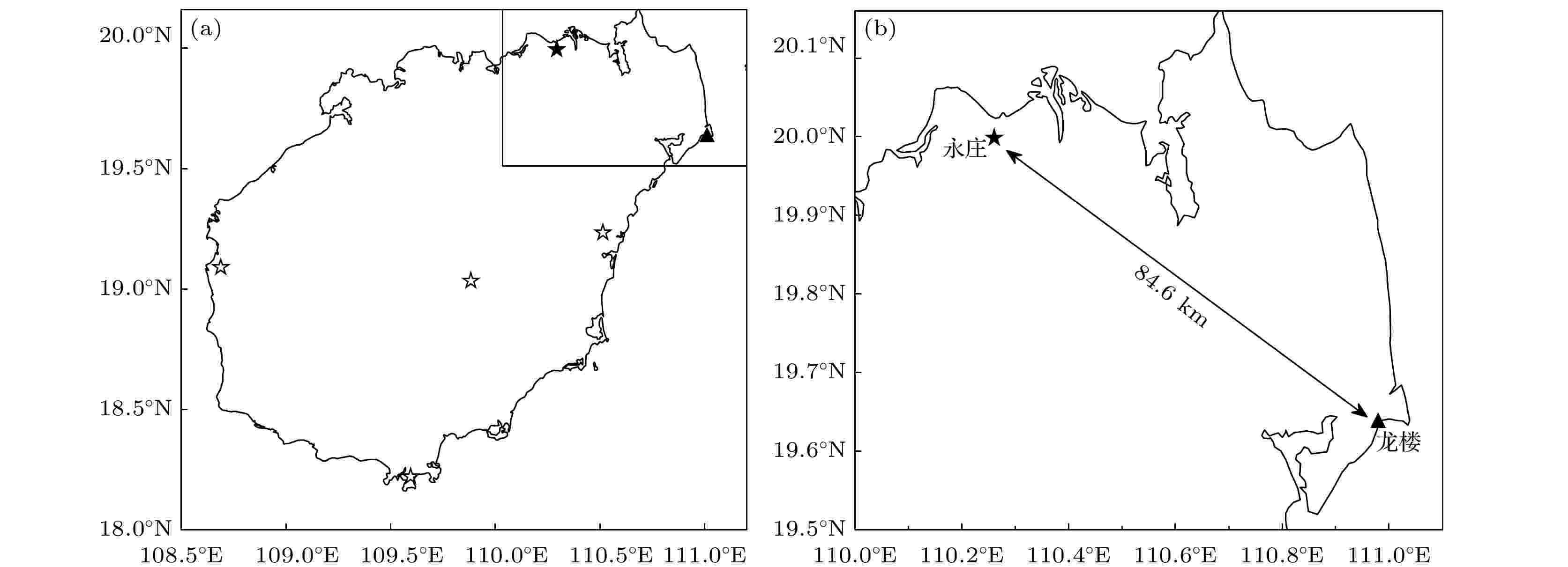
Vertical electrical field during decay stage of local thunderstorm near coastline in tropical island
2021, 70 (10): 109201.
doi: 10.7498/aps.70.20201634
Abstract +
In order to directly observe the electric field characteristics and study the charge structure in thunderstorms occurring in tropical regions, a balloon-borne strong electric field sounding is used to measure the vertical component of the electric field, temperature within the cloud and real-time location information of the sounding. Based on the principle of corona discharge, two 1-m-long metal probes are used as the sensors to detect the vertical electric field. In the summer of 2019, a result of electric field sounding within a local thunderstorm was obtained in the northeastern coastal area of Hainan Island, China. With the combination of an S-band weather radar, atmospheric electric field instrument and lightning locating network, the charge structure of the thunderstorm is analyzed in detail. The results show that the thunderstorm is a small-scaled local thunderstorm occurring in the afternoon, the sounding starting to be observed at the decay stage of the thunderstorm. In this period, lightning activities is rare, and the variation of ground electric field is similar to that of conventional summer thunderstorms. The whole sounding process lasts 34 min, during which the vertical airflow in the cloud is relatively stable, basically keeping 4–6 m/s. It can be seen from the electric field profile that the charge distribution in the thunderstorm cloud shows a complex charge structure which is composed of six charge regions. A negative charge region is lowermost, and above this the polarity alternates successively from bottom to up, where all charge regions are located above the melting-layer. Due to data interruption, it is impossible to accurately judge the upper boundary of the upper negative charge region and the information about the positive charge region above. The remaining charge regions are located in an altitude range of 6.0–6.3 km, 6.3–6.6 km, 6.9–7.3 km and 7.3–8.3 km, respectively. The charge densities in these four regions are –1.84 nC/m3, 1.80 nC/m3, –1.46 nC/m3, and 1.04 nC/m3, respectively. According to the existing data, the charge density of the uppermost negative charge area should be greater than –0.51 nC/m3. Moreover, the upper positive charge region (the fourth from bottom up) has the largest strength, followed by the negative charge region above it, both of which are more than 1 km in thickness. The electric field intensities in the other charge regions are relatively small. The pairs of positive and negative charge regions at the bottom are slightly different in strength and thickness.
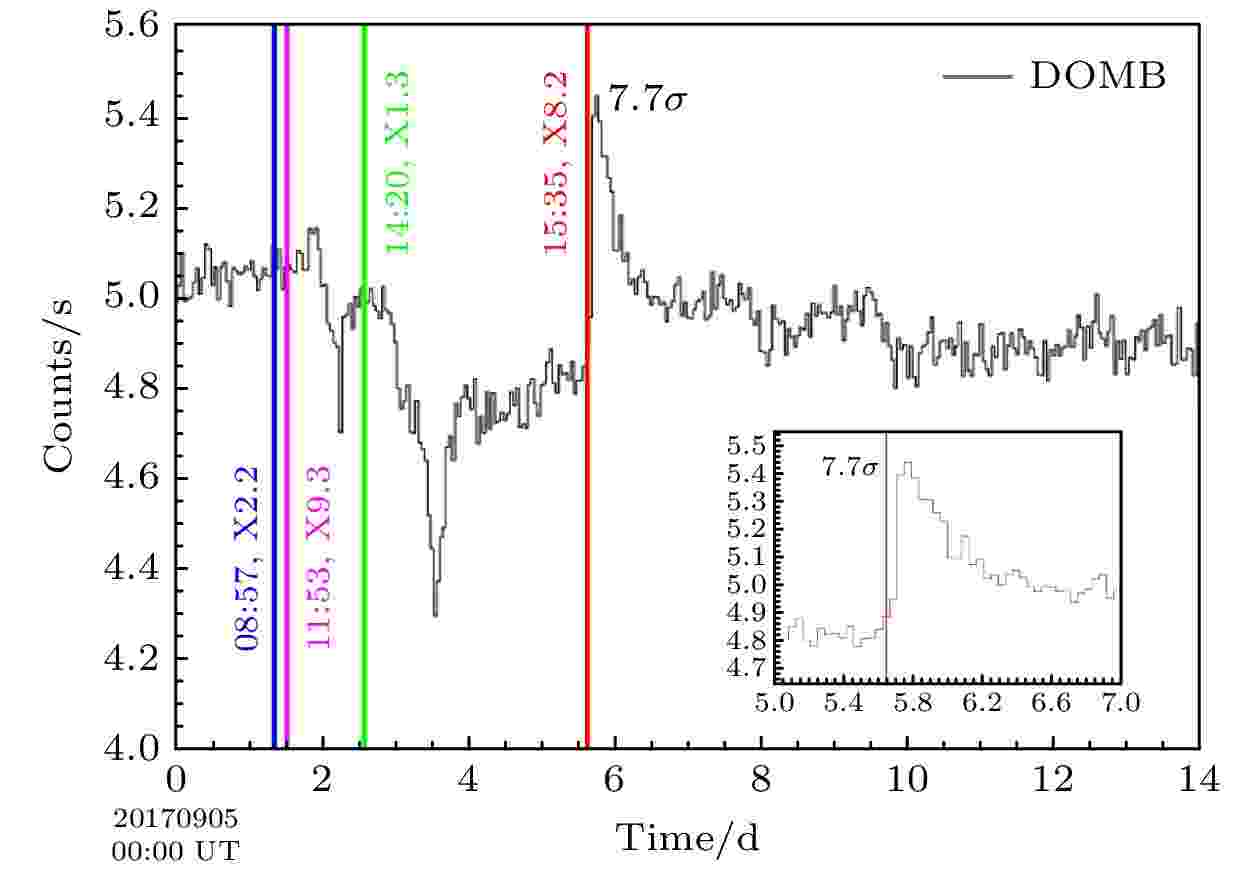
2021, 70 (10): 109601.
doi: 10.7498/aps.70.20201662
Abstract +
The ground level enhancement (GLE) event energy spectrum provides important information about the acceleration and propagation of cosmic ray. In this paper, we analyze the proton flux peak energy spectrum of recent GLE event (2017.09 GLE72) by using GOES15 satellite and neutron monitor experiment data. The method of adjacent averaging smoothing and weighted average are applied to study GOES15 satellite data, and obtain the flux peak and flux peak time. By fitting, the energy spectrum index of proton flux peak is 1.88 in the satellite observation energy range. Again, the energy spectrum index of the neutron monitor observation energy range, 4.86, is obtained by using the new neutron monitor yield function. It can be seen that the peak energy spectrum index given by satellites in the lower energy range (5–433 MeV) is much smaller than that given by the neutron monitor in the higher energy range (0.44–19 GeV). This means that, the energy spectrum in the lower energy range is harder than that in the higher energy range. Hence, the results of the energy spectrum could be explained qualitatively by the re-acceleration mechanism of high energy solar particles. In the low corona region, first, the particles released by the solar flare are accelerated, and the energy spectrum index of the high-energy range is twice that of the low-energy range. Then part of the solar high energy particles from the low corona enter into the CME, where they will be re-acceleration by the shock wave. The GLE72 event high energy range energy spectrum index given by the neutron monitor experiment is 4.86, so the energy spectrum index in low energy range should be 4.86/2 = 2.43. However, the low energy range energy spectrum index is 1.88 (lower than 2.43 in low energy range). The reason may be that the energy spectrum index is further reduced due to the re-acceleration effect in the shock wave generated by the CME. The observation of GLE event is one of the main research subjects of the Large High Altitude Air Shower Observatory (LHAASO). Also, the GLE72 proton peak energy spectrum results provide important information to observe solar high energy particles in the LHAASO experiment.

















